With those sky-piercing massifs, turquoise lakes, and fairytale forests, hiking in the Italian Dolomites is the best way to immerse yourself in the landscapes of this astonishing part of the world.
The Dolomites are a true dream destination when it comes to hiking as you can find hundreds of hiking trails, ranging from easy day hikes to challenging multi-day excursions.
To save you hours of research, I’ve rounded up the best hikes in the Dolomites that you absolutely can’t miss. Whether you’re a complete beginner or a seasoned hiker, I’m sure you will find at least a few hikes that you can add to your Dolomites road trip itinerary!
Disclosure: *This post contains a few affiliate links, which means I may receive a small commission, at no cost to you, if you make a purchase through my link.*
No time to read now? Pin it for later!

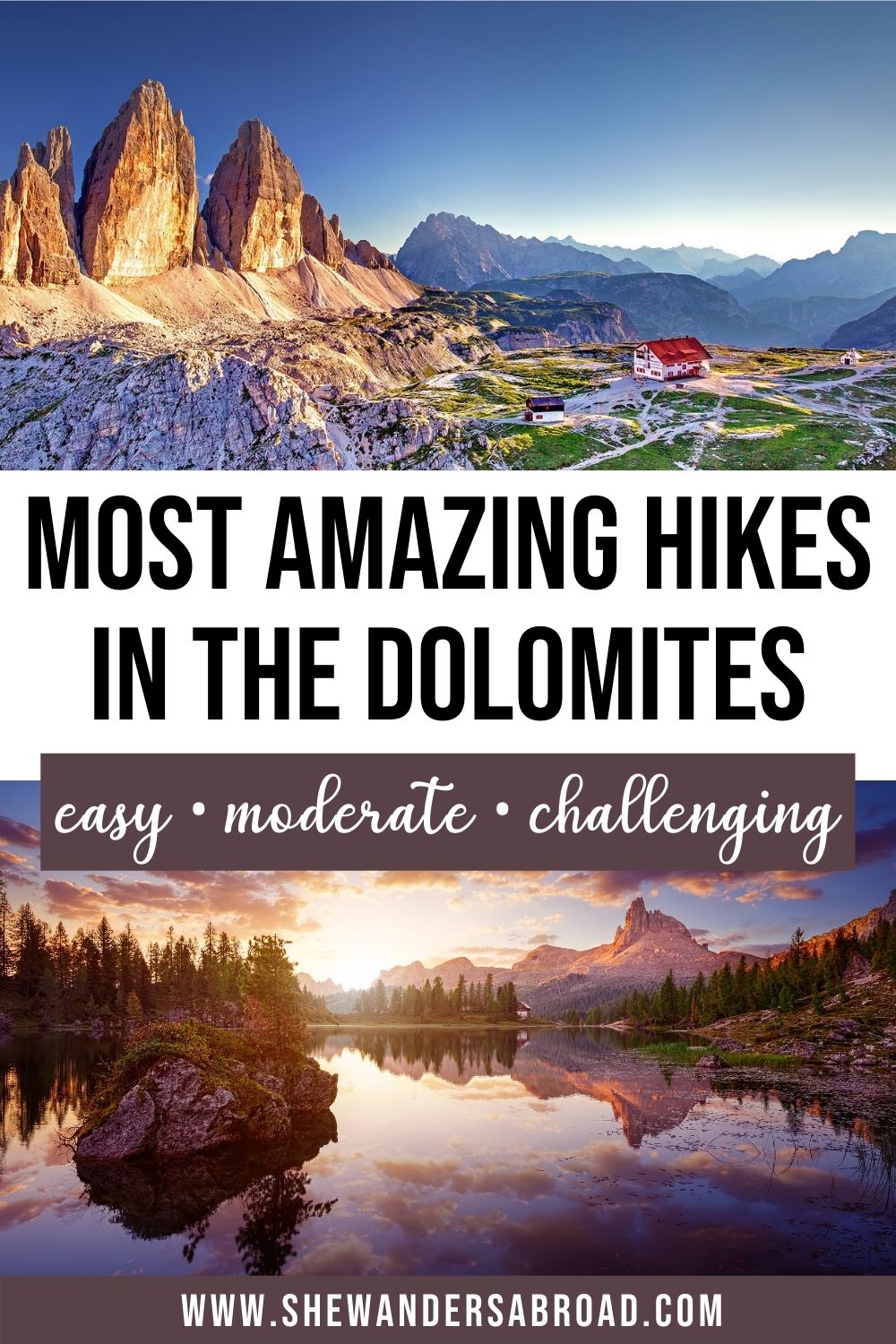
Table of Contents
Useful Info for Hiking in the Dolomites
Before we start with the best Dolomites hikes, let’s run through some handy details to help you plan your adventure!
Best time for hiking in the Dolomites
The summer weather in the Dolomites is gorgeous, with average temperatures lingering around 25°C (80 °F). Of course, the downside is that the region gets very crowded during the peak season of July and August.
For that reason, the best time for hiking in the Italian Dolomites is the shoulder season of late spring (June) and late summer/early autumn (September-October). This way you’ll get great weather and you won’t have to share the trails with so many people.
Snow may arrive as early as mid-October and this can make the hiking conditions more dangerous. In fact, some trails close once the winter season arrives. So while winter in the Dolomites is pretty magical, if you want to hike in the Dolomites, try to avoid visiting in the winter months.
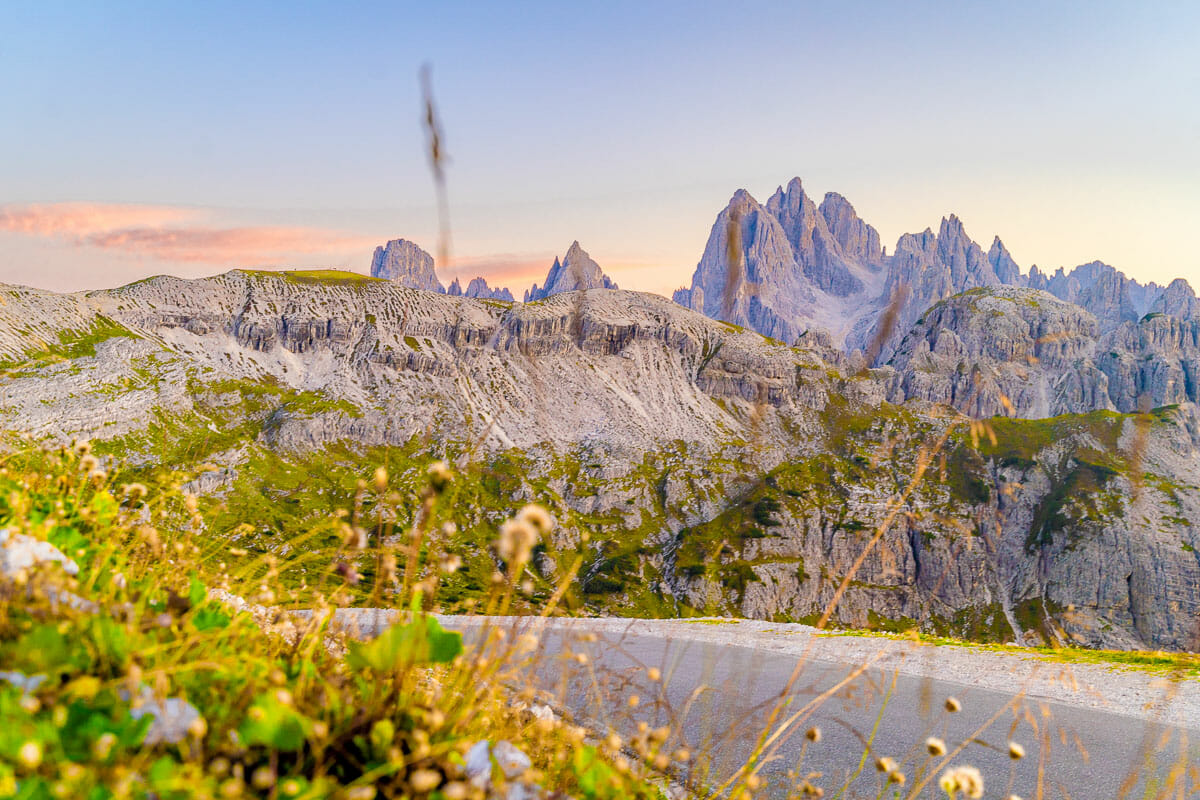
What to pack for hiking in the Dolomites
- Polarized sunglasses
- Sunscreen and sun hat
- Reusable water bottle
- Layers – it gets chilly while hiking at the higher altitudes
- Sturdy hiking boots (for some of the easier walks, sneakers are fine)
- Headtorch (if you intend to hike for sunrise or sunset)
- Crampons (if you intend to hike during winter)
Tips for hiking in the Dolomites
Not planning on hiring a car for your trip to the Dolomites? You’ll be happy to hear that most of the best hikes in the Dolomites are accessible via public bus. But bear in mind that some of the bus routes only operate during the peak season (from mid-June to mid-October).
You can take a picnic on your hike or eat at a rifugio, most of the hiking trails feature a couple of these mountain huts where you can buy food and drinks. While some of the rifugios accept credit cards, the connection can sometimes be patchy so it’s best to carry cash as a backup.
Make sure that you always have layers with you! Even if the weather is clear and sunny when you leave your hotel or apartment, it can be completely different on top of the mountains.
And since we’re talking about mountains where the weather is changing pretty quickly, it’s best to be prepared. Having a light jacket and a rain poncho in your backpack is always a good idea!
Wearing proper hiking boots and comfortable clothes is really important as well. You’re going to see a few photos where I’m wearing long flowy skirts – please keep in mind that I didn’t hike in those skirts!
I was wearing hiking pants and boots all the time and I carried the skirt in my backpack so I can throw it on my hiking outfit for photos.
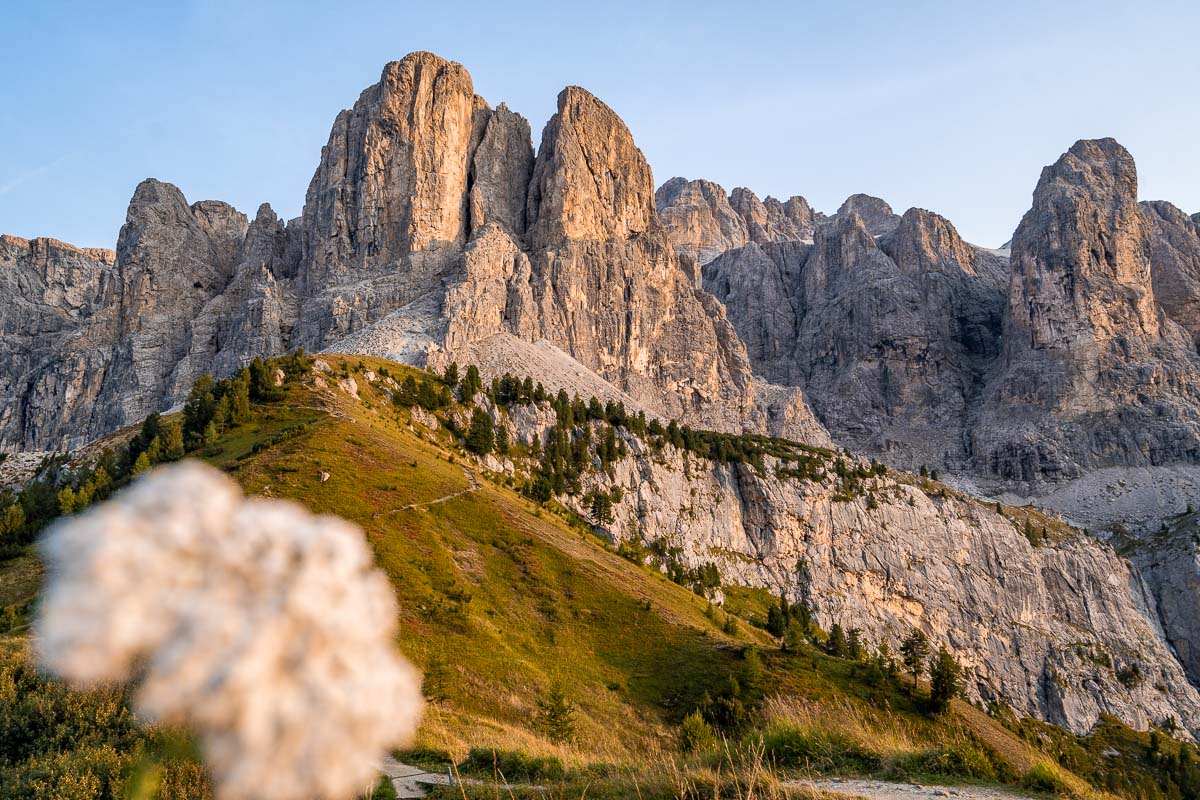
Best Hikes in the Dolomites
Now let me tell you about the best day hikes in the Dolomites. Ranging from easy to moderate to challenging, there is a hike for every visitor to this wonderful region.
On the below map you can find all the exact trails mentioned in this article together with parking lots, guesthouses, and some scenic viewpoints. You can also save this map to your Google Maps app on your phone if you click on the bracket in the upper right corner so you can always have it with you. Super convenient, right?
1. Lago di Braies Circuit
Starting point: Lago di Braies parking lot
Ending point: Lago di Braies parking lot
Distance: 4 km (2.5 miles)
Elevation gain: 50 meters (165 feet)
Duration: 1-2 hours
Difficulty: Easy
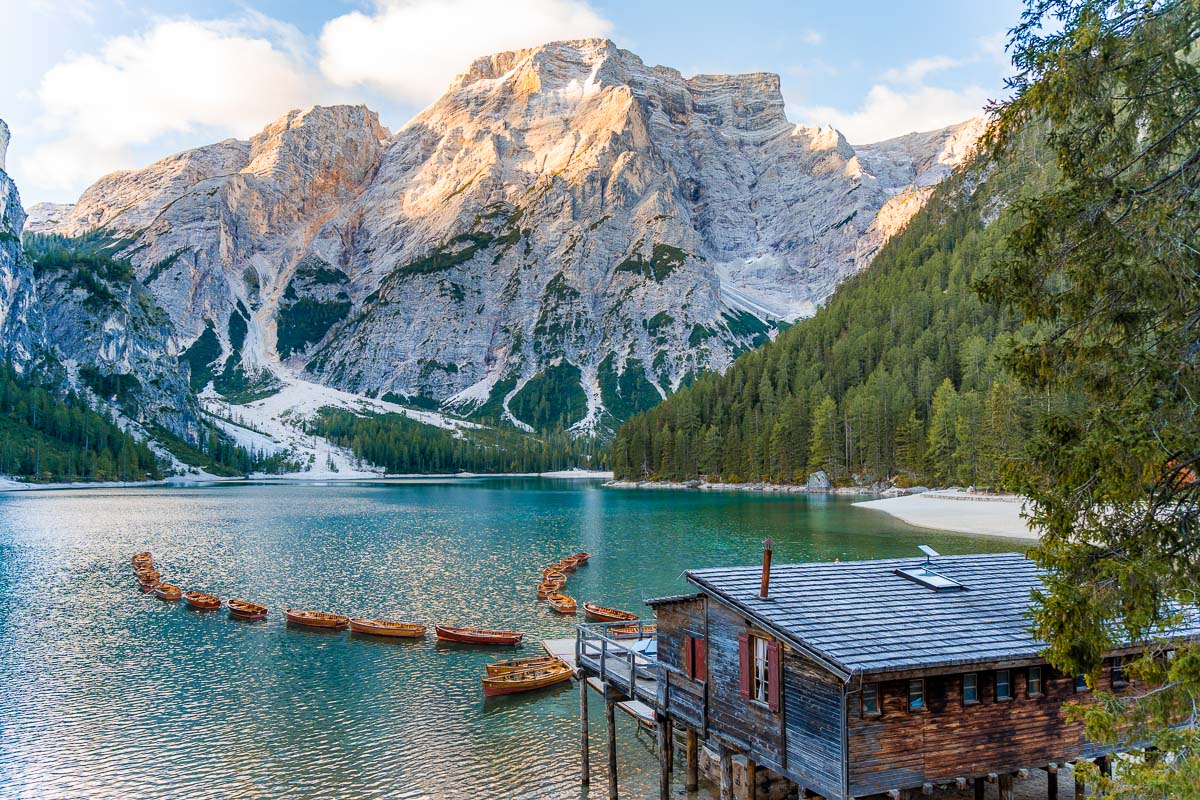
As one of the most beautiful lakes in the Dolomites, there is a high chance that Lago di Braies is at the top of your travel itinerary!
Flat as a pancake, this is an easy trail that is suitable for beginners and those with young children who want to experience a taste of hiking in the Dolomites.
You can just follow the path around the crystal clear turquoise lake. It takes an hour to walk around the lake, but allow 2 hours in case you want to eat a picnic or take some photos.
Bear in mind that since this is the most famous lake in the Dolomites, it gets very busy during the day. I recommend arriving as early as possible so that you can enjoy the peace before it gets crowded. Sunrise is ideal!
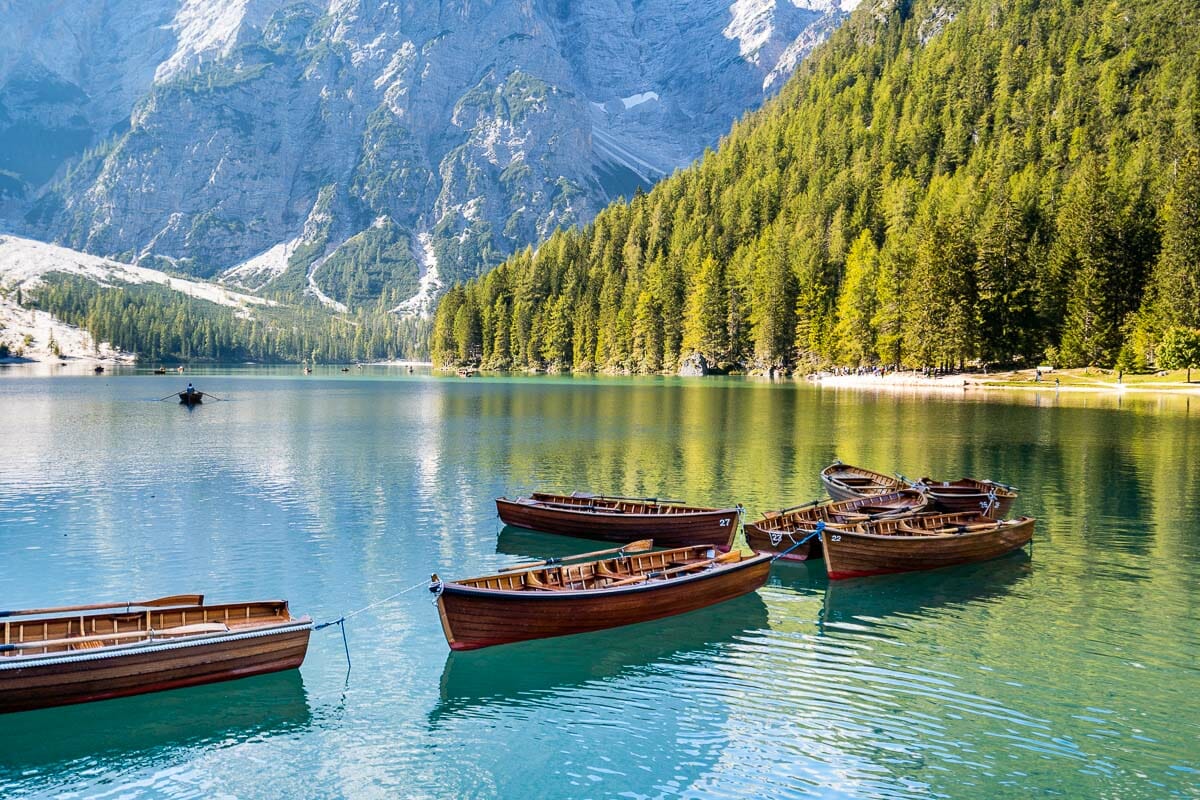
There is a car park only a few minutes’ walk from Lago di Braies. You get 15 minutes of free parking before the fees kick in. Otherwise, the rates are €10 for 3 hours between 6 am – 5 pm or €6 for 3 hours between 5 pm – 8 pm or €3 for 3 hours between 8 pm – 6 am. Alternatively, you can take the 442 bus from Dobbiaco.
If you have some extra time, it’s worth staying a bit longer after you completed the trail around the lake and renting a bowing boat so you can experience the lake from a different angle.
The boathouse is open between 8 am – 7 pm pm in July and August, while it’s only open from 9 am to 5 pm between the end of May and the end of June. It opens at 10 am from the beginning of September until the beginning of November. A boat rental costs €25 for 30 minutes and €35 for 60 minutes, reservation in advance is not possible.
2. Tre Cime di Lavaredo Loop
Starting point: Rifugio Auronzo
Ending point: Rifugio Auronzo
Distance: 10.6 km (6.5 miles)
Elevation gain: 430 meters (1,400 feet)
Duration: 4-5 hours
Difficulty: Easy
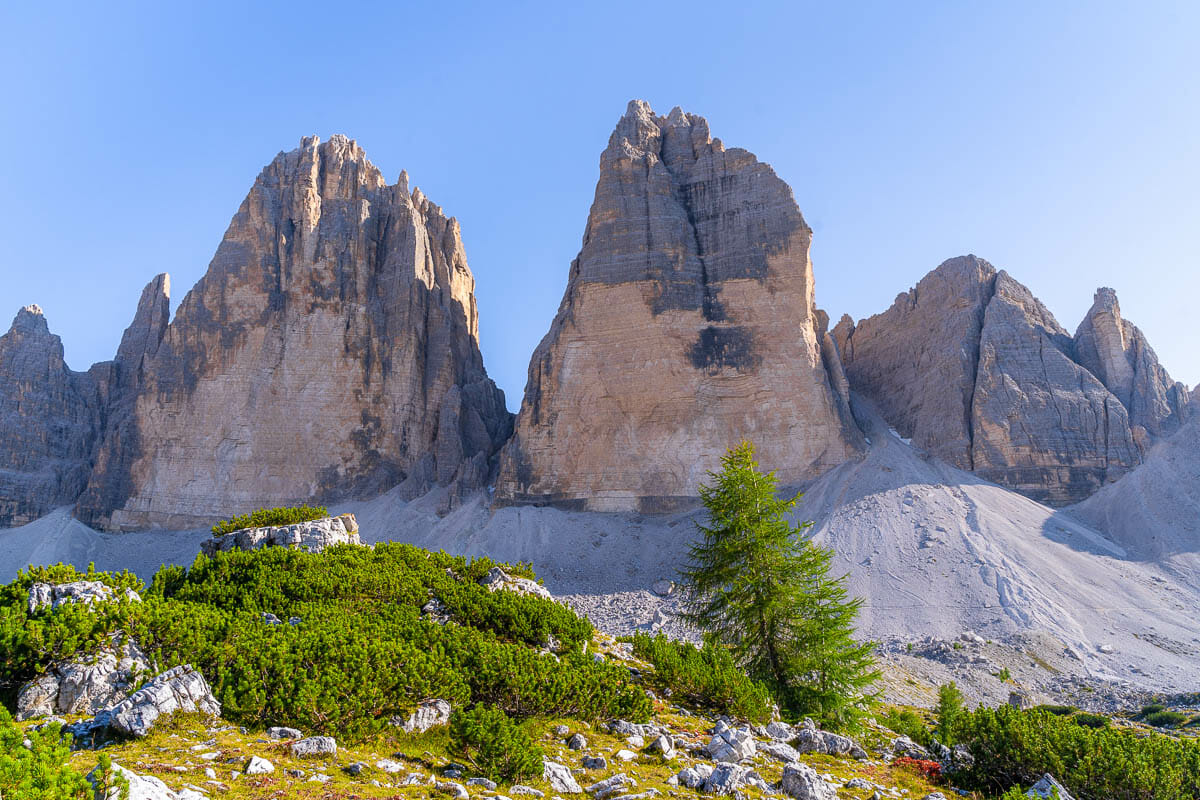
The Tre Cime di Lavaredo loop is the most famous hike in the Dolomites – and for a very good reason! It gets you up close with the iconic three peaks that you’ll have seen plastered all over Instagram and travel guides for the Dolomites.
Although relatively long, this is an easy hike that is accessible to most walkers. It’s one of the best day hikes in the Dolomites for novice hikers and even children, but remember that there are some uphill sections.
You can complete this hike either clockwise or counterclockwise. I definitely recommend going counterclockwise because this means you’ll have a view of the three peaks the whole time.
In that case, when you leave the rifugio, you will need to follow path no. 101 which takes you towards Rifugio Lavaredo and eventually, the Forcella Lavaredo viewpoint.
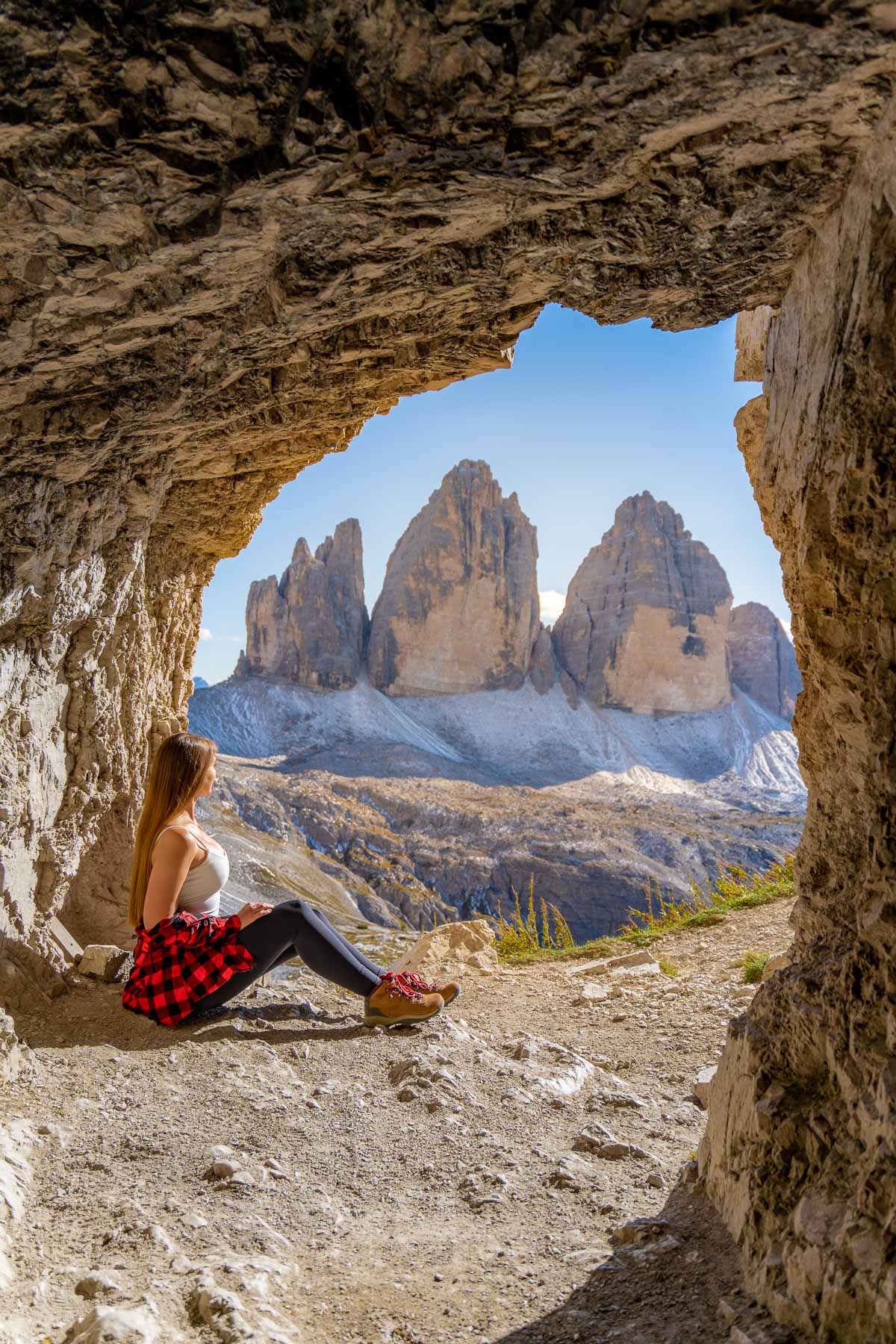
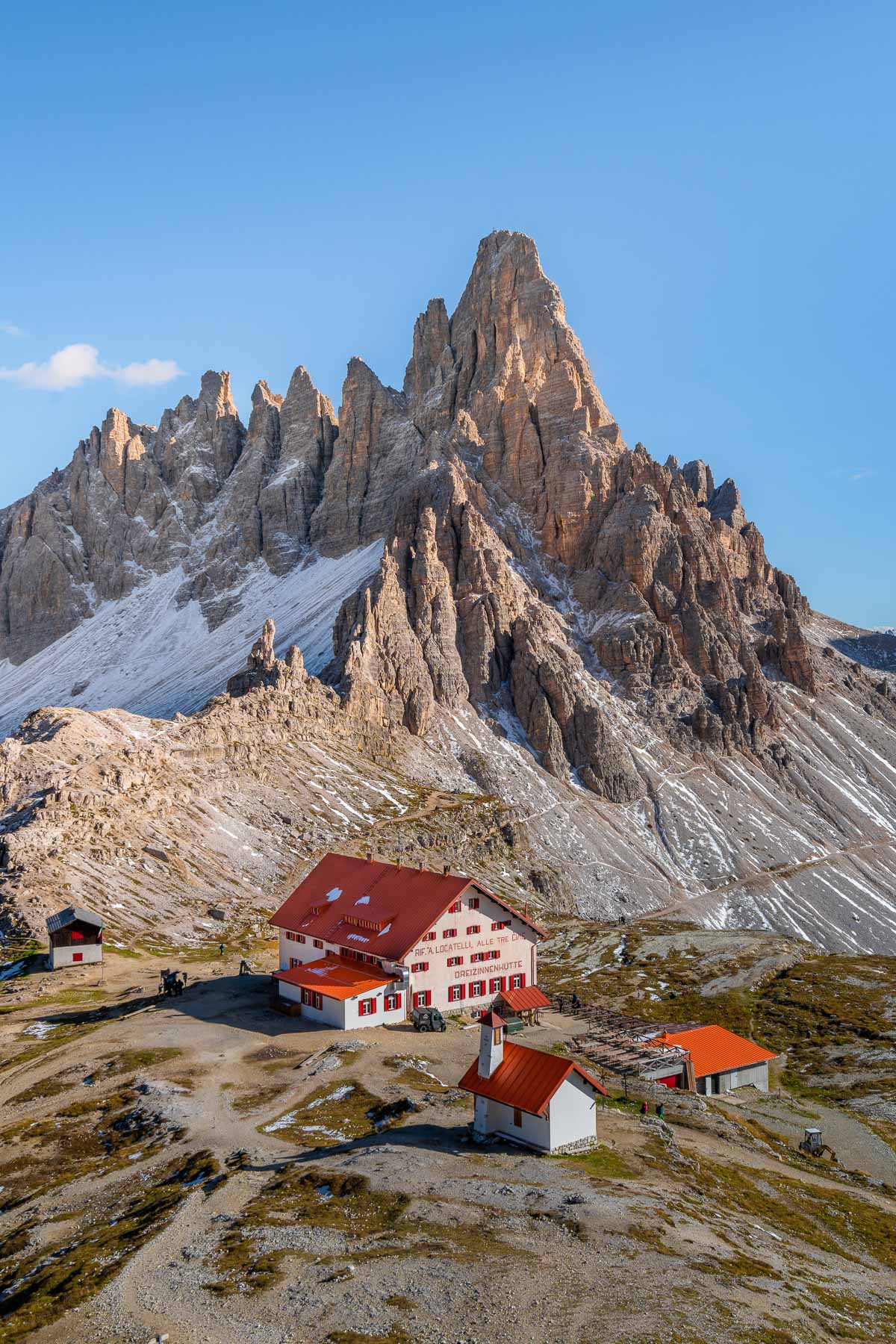
This is the highest point on the hike and rewards you with one of the most incredible panoramas in the entire Dolomites. Towards the end of the hike, you will also see the razorblade spires of Cadini di Misurina.
There are a number of rifugios on this trail where you can grab some refreshments, my personal recommendation is the Dreizinnenhütte which has the most unforgettable views.
If you want to extend your Tre Cime hike, you can start at Lake Antorno and walk to Rifugio Auronzo from there. This takes about 1.5 hours each way.
Otherwise, you can opt for taking a bus from Lake Antorno or you can drive up in your own car. Unfortunately, there is only one road leading up to Rifugio Auronzo and since it’s a private road, you need to pay €30 to use it with a normal car.
If you want to know more about this hike, you can check out my comprehensive guide about the Tre Cime di Lavaredo hike.
3. Cadini di Misurina
Starting point: Rifugio Auronzo
Ending point: Rifugio Auronzo
Distance: 2 km (1.2 miles)
Elevation gain: 112 meters (370 feet)
Duration: 35-45 minutes
Difficulty: Easy
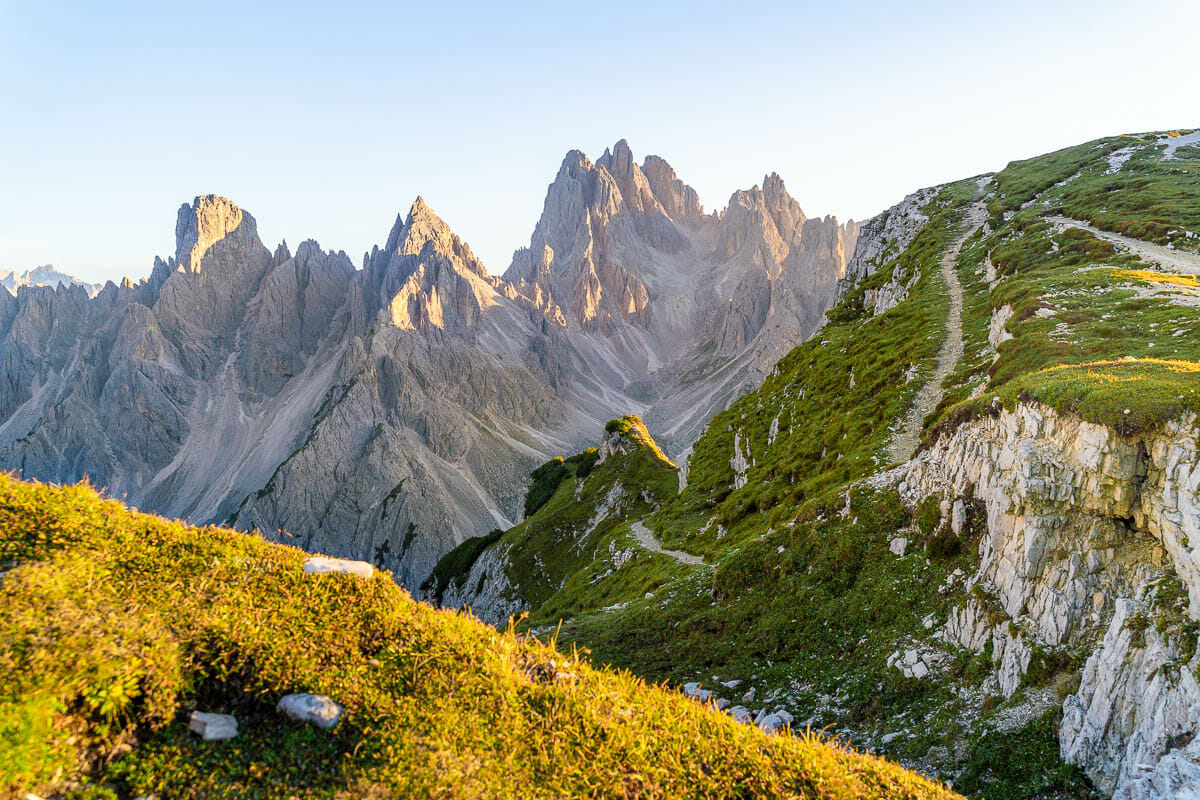
You might not know the name of this hike but you will certainly know the viewpoint if you’ve spent any time scrolling through Dolomites photos on Instagram.
The Cadini di Misurina hike is a short walk that brings you to a spectacular viewpoint. Although not too demanding, this trail is subject to narrow paths with steep drop-offs so it’s not one of the best hikes in the Dolomites if you have a fear of heights.
From the Rifugio Auronzo parking area, you will follow trail no. 117 in the opposite direction away from the Tre Cime track and towards the majestic peaks of Cadini di Misurina. You can see them ahead of you in the distance.
Once you’ve located the track, red and white markers will guide you all the way to the viewpoint, which pokes out from the cliffs with a view of Cadini di Misurina right in front of you.
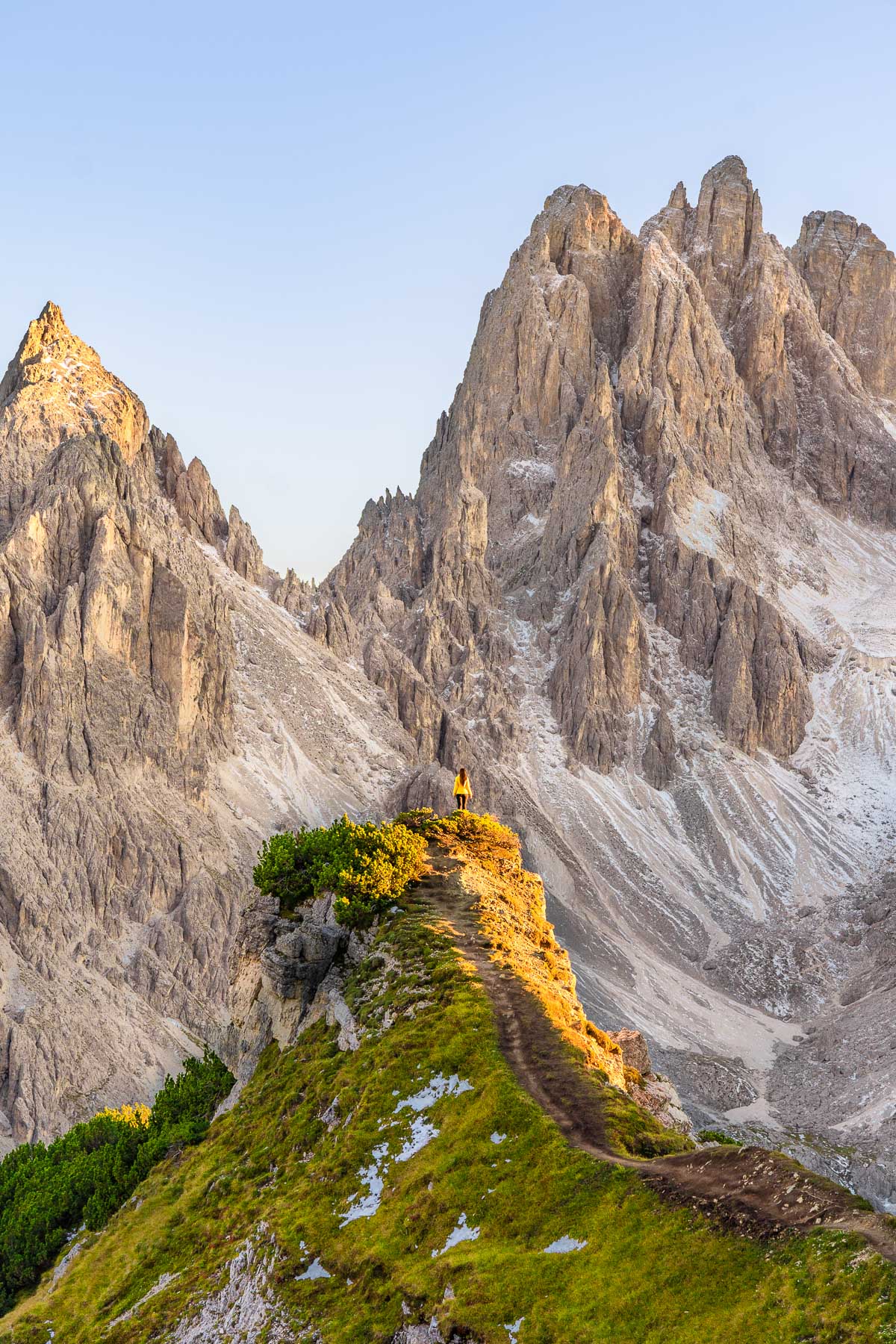
Actually getting to the viewpoint is a little scary. The track is extremely narrow and high up with steep drops on either side – if you’re nervous about heights then this might not be the best hike in the Dolomites for you.
Even if you’re not fazed by heights, I wouldn’t recommend walking to the viewpoint in rainy or windy conditions.
As the starting point is the same as that for the Tre Cime hike, you might want to tackle both on the same day. If you want to know exactly how to get to the viewpoint pictured above (it can be a bit tricky), read my step-by-step guide about the Cadini di Misurina hike!
4. Lago di Federa /Croda da Lago Circuit
Starting point: Ponte de Ru Curto (road 638)
Ending point: Ponte de Ru Curto
Distance: 12.5 km (7.8 miles)
Elevation gain: 759 meters (2,500 feet)
Duration: 6 hours
Difficulty: Moderate
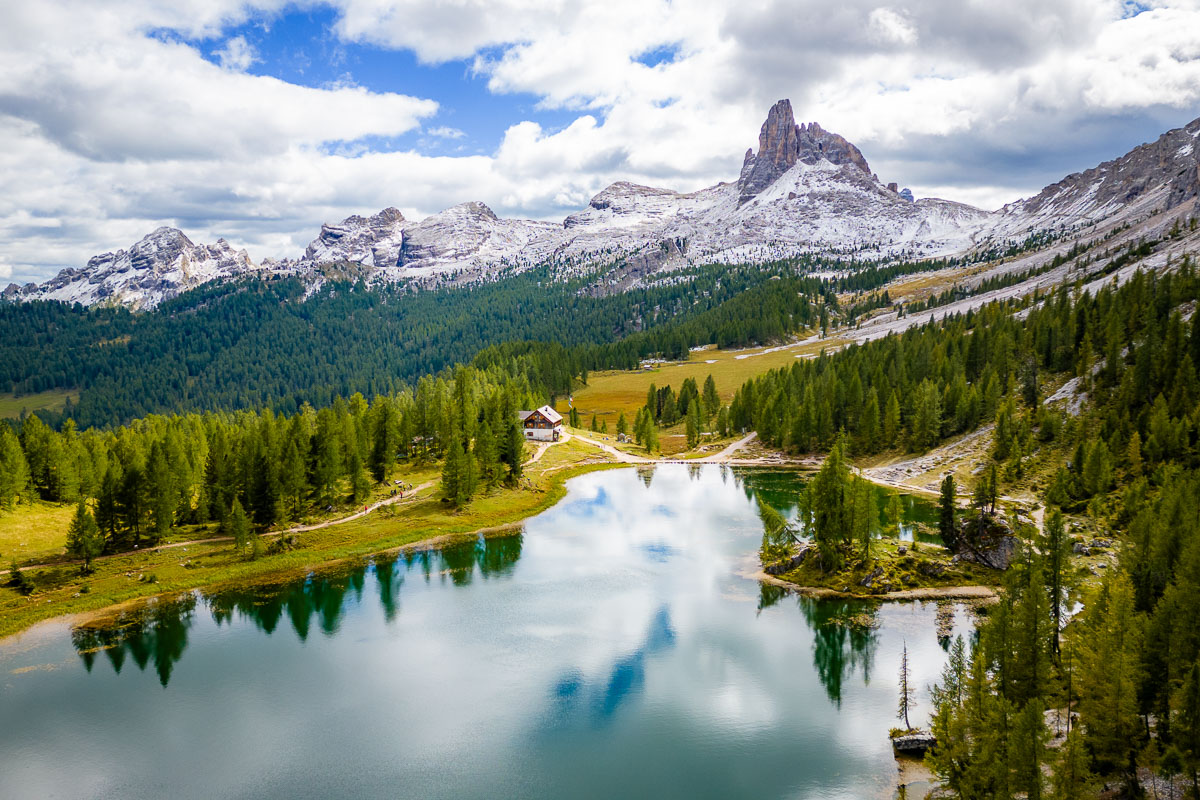
This is one of the best day hikes in the Dolomites if you want to get off-grid and treat yourself to a view of one of the most magical lakes in the region! Lago di Federa is only accessible on foot and it’s a pretty vigorous hike with lots of legwork required.
You can walk to the lake from Ponte de Ru Curto in 2-3 hours and then return the same way. But if you have more time, I recommend that you extend the hike from the lake and complete the full loop.
Your walk starts with a lovely wander through woodland before gradually getting steeper. At some point, you will be presented with a fork and you can either hike clockwise or counterclockwise, but I recommend the clockwise route. Either way, the trail is clearly marked the whole way.
The ascent to the lake does get rather tiring as there is a lot of uphill walking along a zig-zag path. If it has rained or during heavy snowfall, you’ll appreciate poles and/or crampons for this hike.
Once at the top, your prize is the view from the Val Negra viewpoint which provides a swooping view across the peaks. And of course, the splendid lake with its view of the Croda da Lago mountain range.
If you want to complete the loop, you will follow the paths nos. 434, 436, and 435 respectably. They’re all clearly marked and deposit you at Forcella de Formin, the highest point of the hike where you will get unrivaled views across the ranges before making your way back towards Ponte de Ru Curto.
5. Alpe di Siusi/Seiser Alm
Starting point: Compatsch parking lot
Ending point: Compatsch parking lot
Distance: 9.1 km (5.7 miles)
Elevation gain: 170 meters (558 feet)
Duration: 2-3 hours
Difficulty: Easy
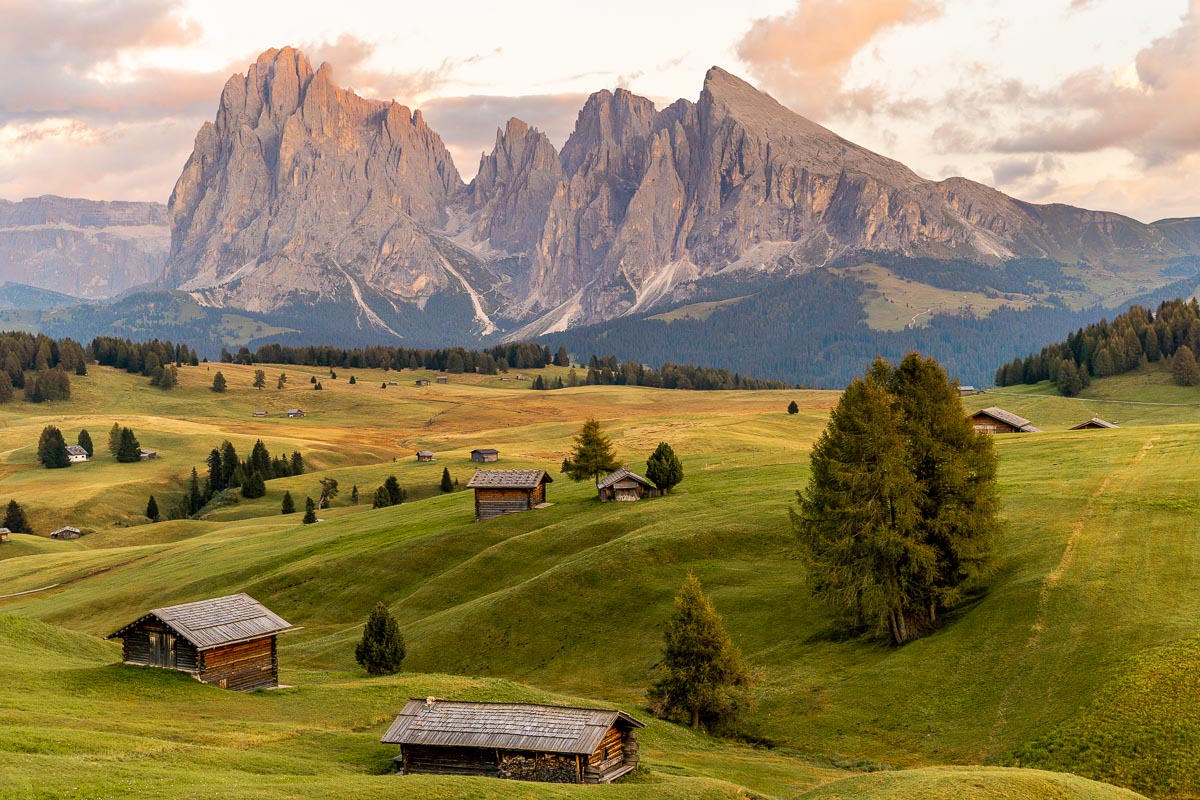
Alpe di Siusi is the largest high-altitude alpine meadow on the European continent and is one of the most remarkable sights in the region.
From the lookout, you will see pretty much every mountain range in the whole of the western Dolomites! You’ll clock the Odle and the Puez groups, Langkofel, Plattkofel, the Marmolada, the Vajolet Towers, and the Rosengarten group, among others.
In order to preserve the natural environment, there is a strict ban on driving to the trailhead between 9 am and 5 pm. Outside of these times, it’s fine, so I recommend you schedule your Alpe di Siusi hike for either sunrise or sunset.
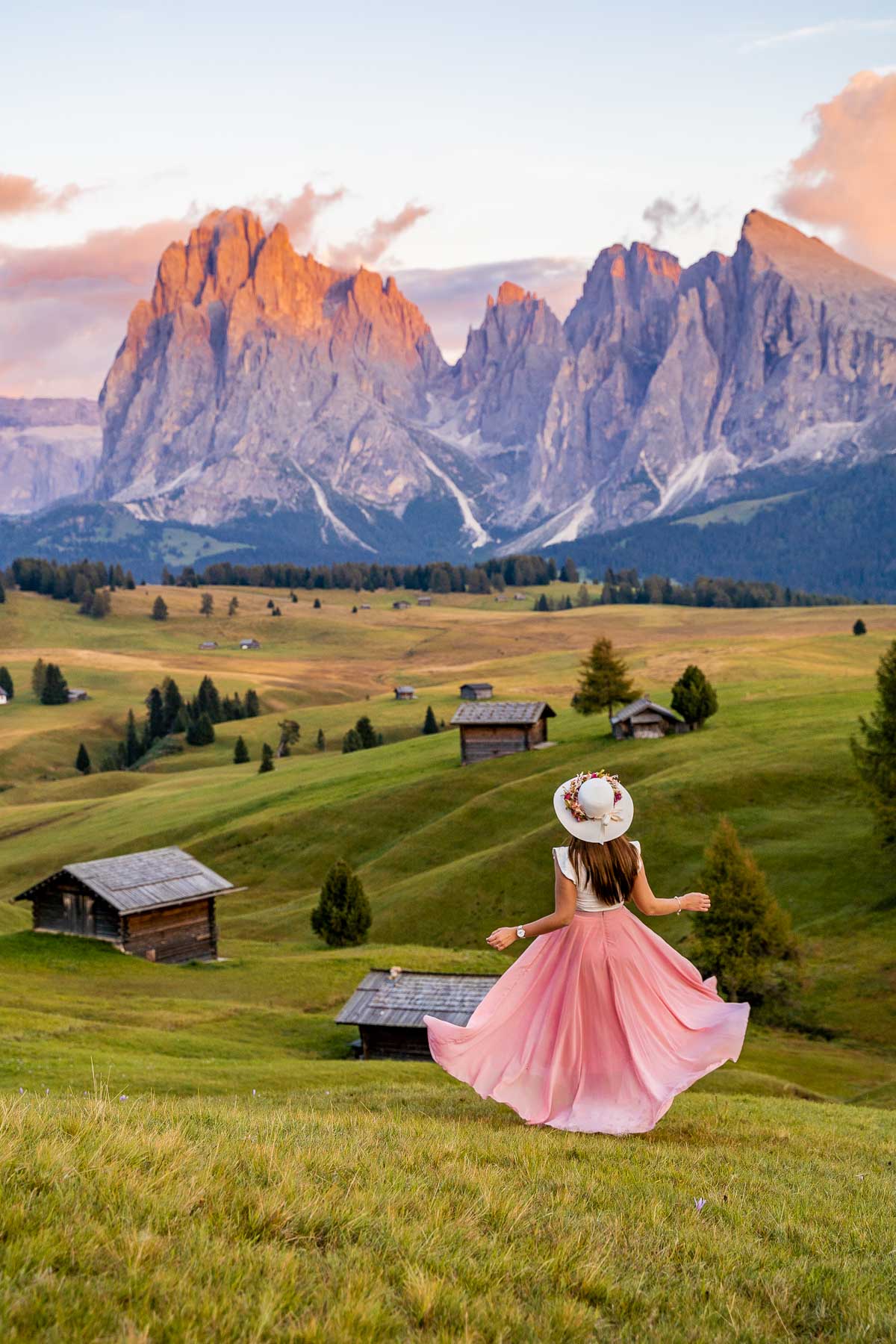
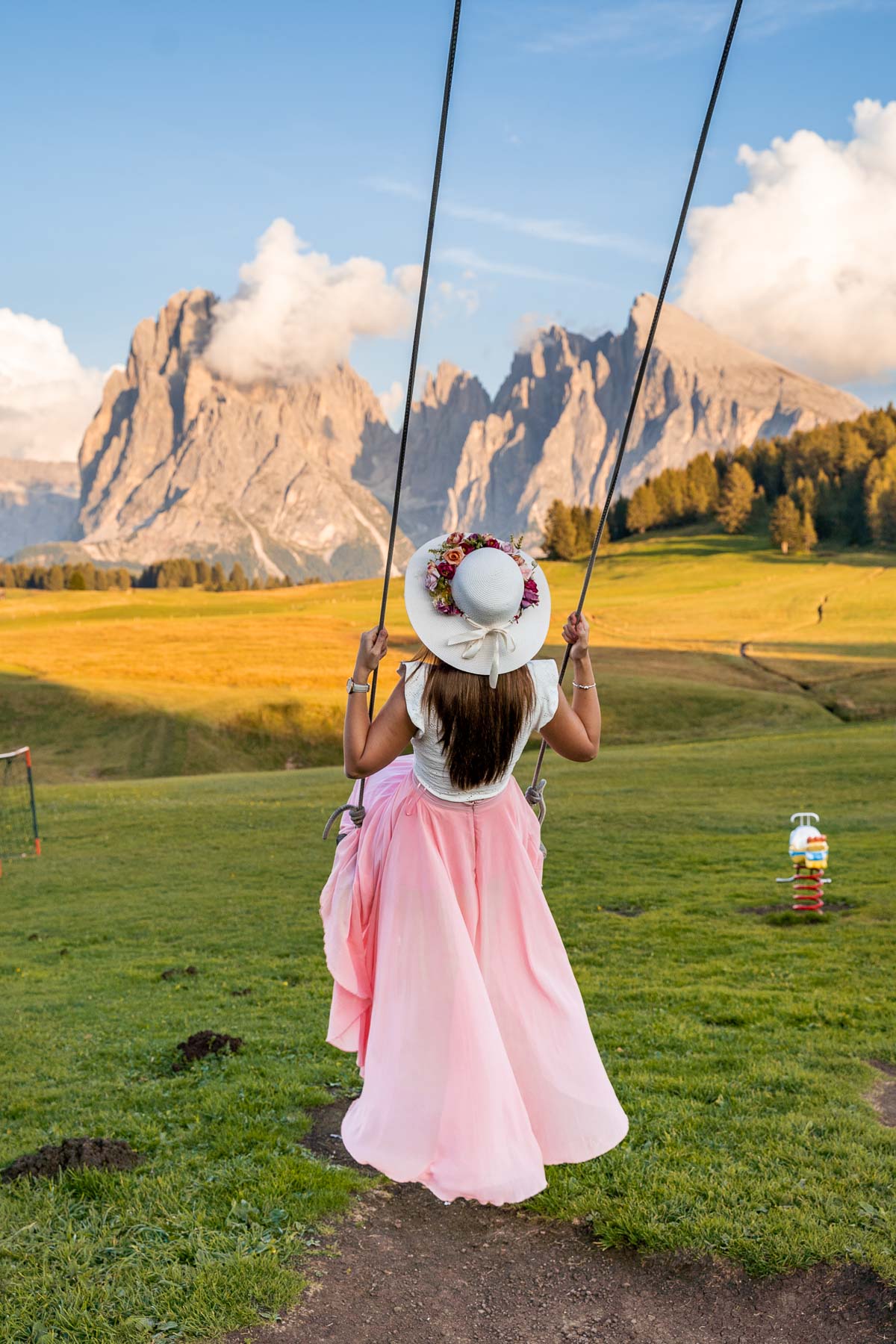
This isn’t a bad thing at all, because the light at these times is phenomenal – Alpe di Siusi is definitely one of the best Dolomites hikes for first light or golden hour! Remember that if you visit during July/August there will be more congestion on the road, especially at sunset.
From the Compatsch parking lot, it will take you 1 hour to hike to the viewpoint via a well-marked, relatively flat trail. Just before you reach the viewpoint, you can pop over to the famous swing outside the Malga Sanon restaurant. It begs for a photoshoot!
6. Lago di Carezza
Starting point: Lago di Carezza parking lot
Ending point: Lago di Carezza parking lot
Distance: 1.1 km (0.7 miles)
Elevation gain: 31 meters (101 feet)
Duration: 20-30 minutes
Difficulty: Easy
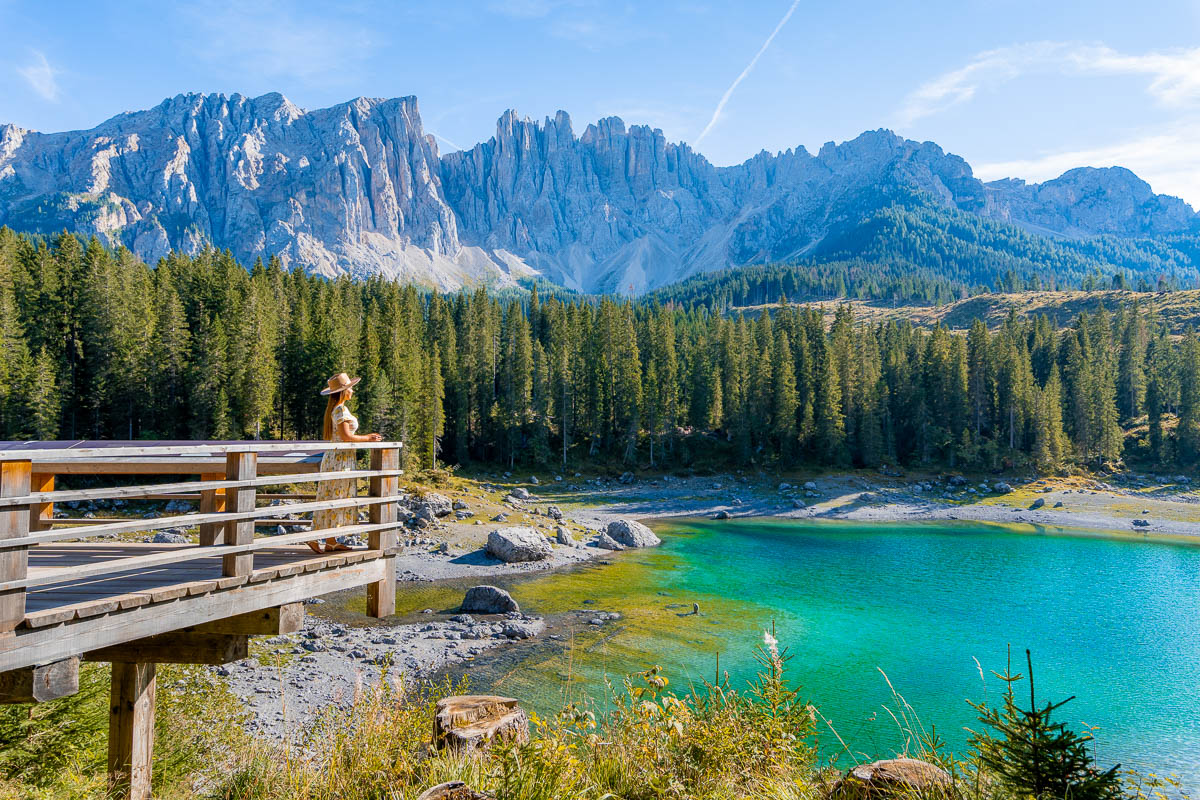
Lago di Carezza/Karersee is an enchanting lake in the Dolomites that is commonly known as the ‘rainbow lake.’ Why is that? Peer into the water and you’ll see every color under the sun!
You can hike around this lake in less than 30 minutes so it’s one of the best Dolomites hikes if you’re short on time. The trail is clearly marked and is peppered with lookouts where you can take incredible photographs.
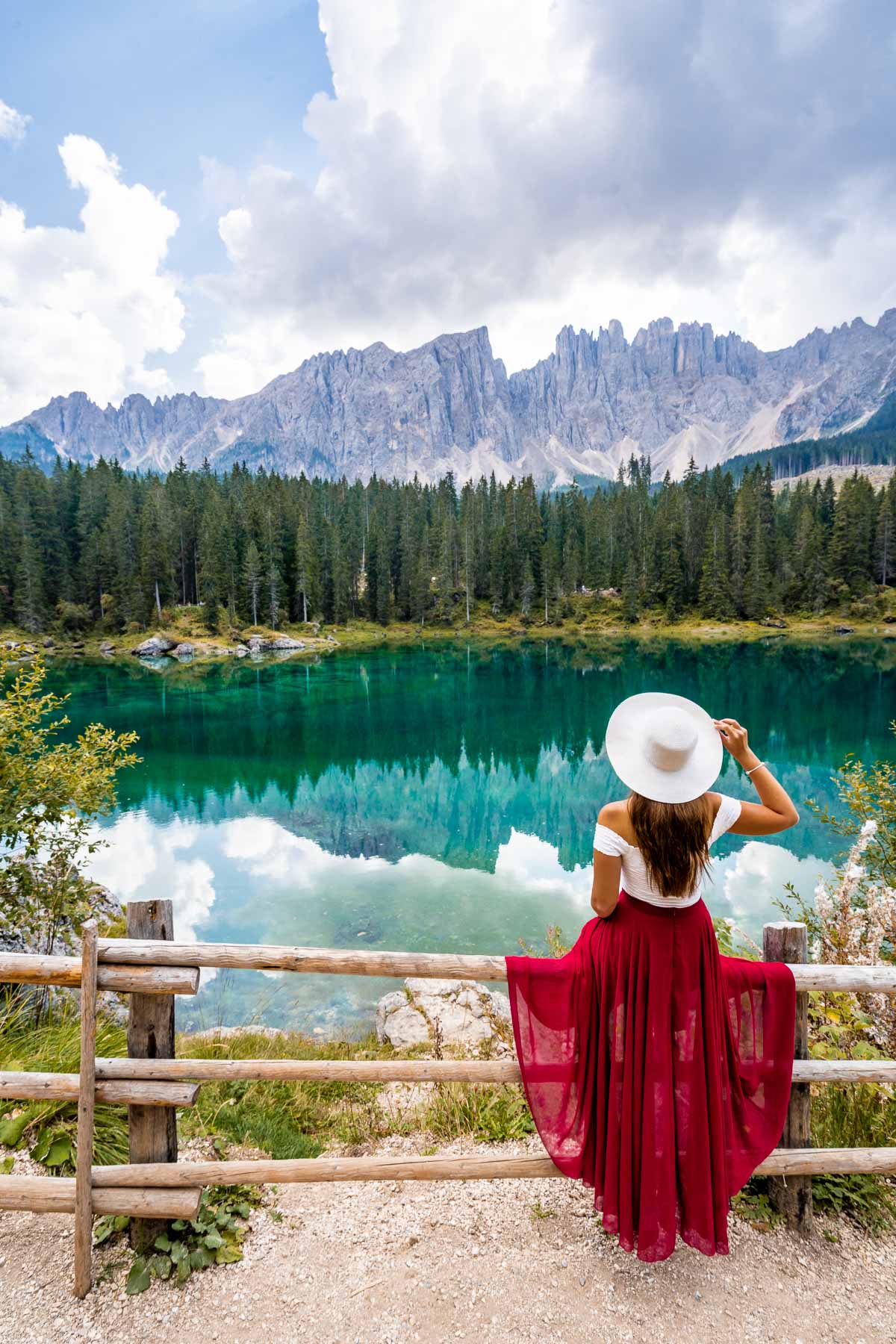
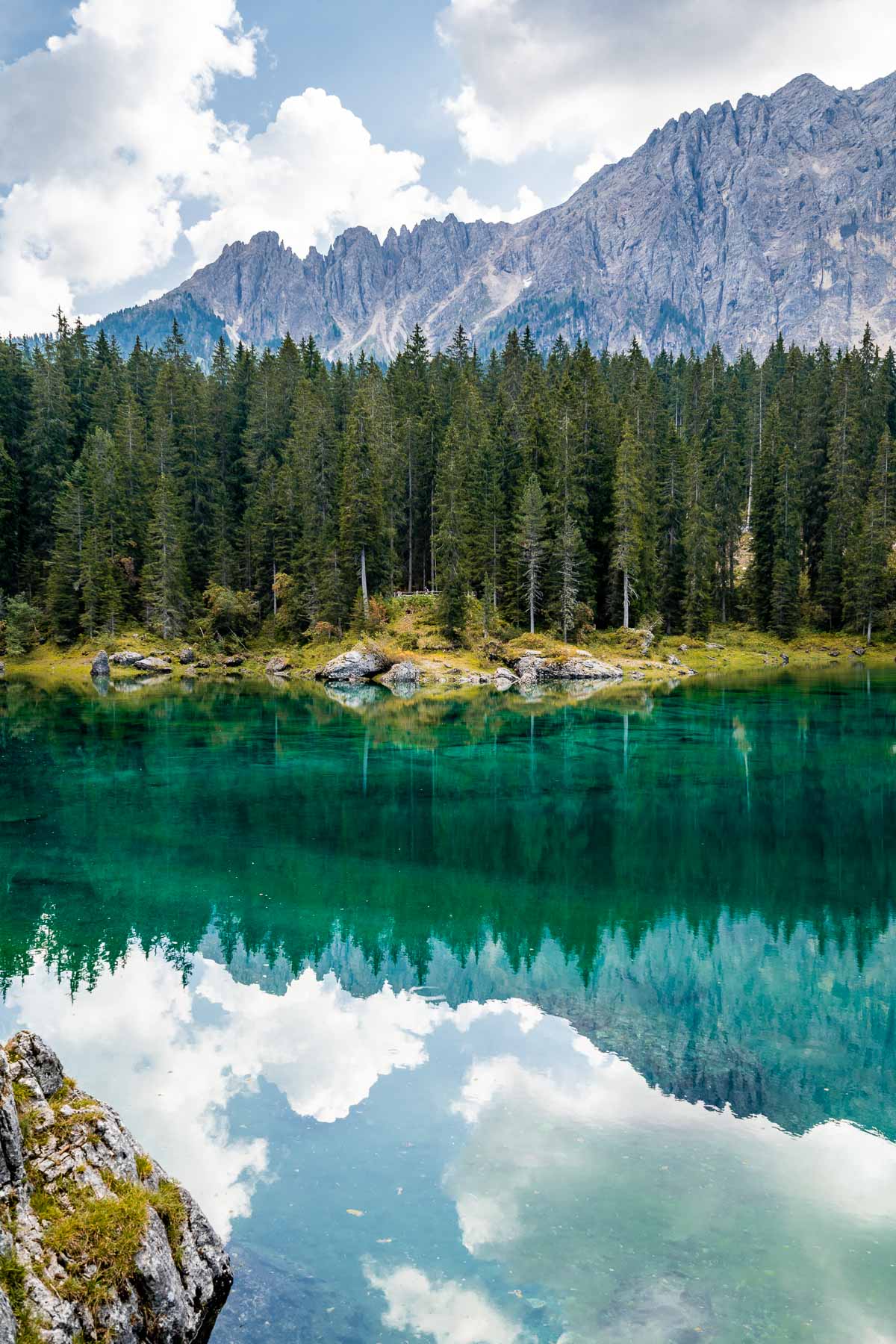
Due to the fragility of the lake and the need to conserve it, a barrier has been placed around the water. Even so, the views are out of this world – especially with the Latemar mountain range in the background. It’s best to explore the lake as early as possible as the trail gets very busy.
If you want to take a slightly longer hike, you can tap on the Templeweg Trail. This 9.5 km (5.9 miles) takes you from the shore and into the Karerwald Forest. The track is signposted the whole way and will take you around 3 hours to complete.
7. Seceda Ridge: Option A
Starting point: Ortisei-Furnes-Seceda cable car
Ending point: Ortisei-Furnes-Seceda cable car
Distance: 2.5 km (1.6 miles)
Elevation gain: 100 meters (328 feet)
Duration: 1 hour
Difficulty: Easy
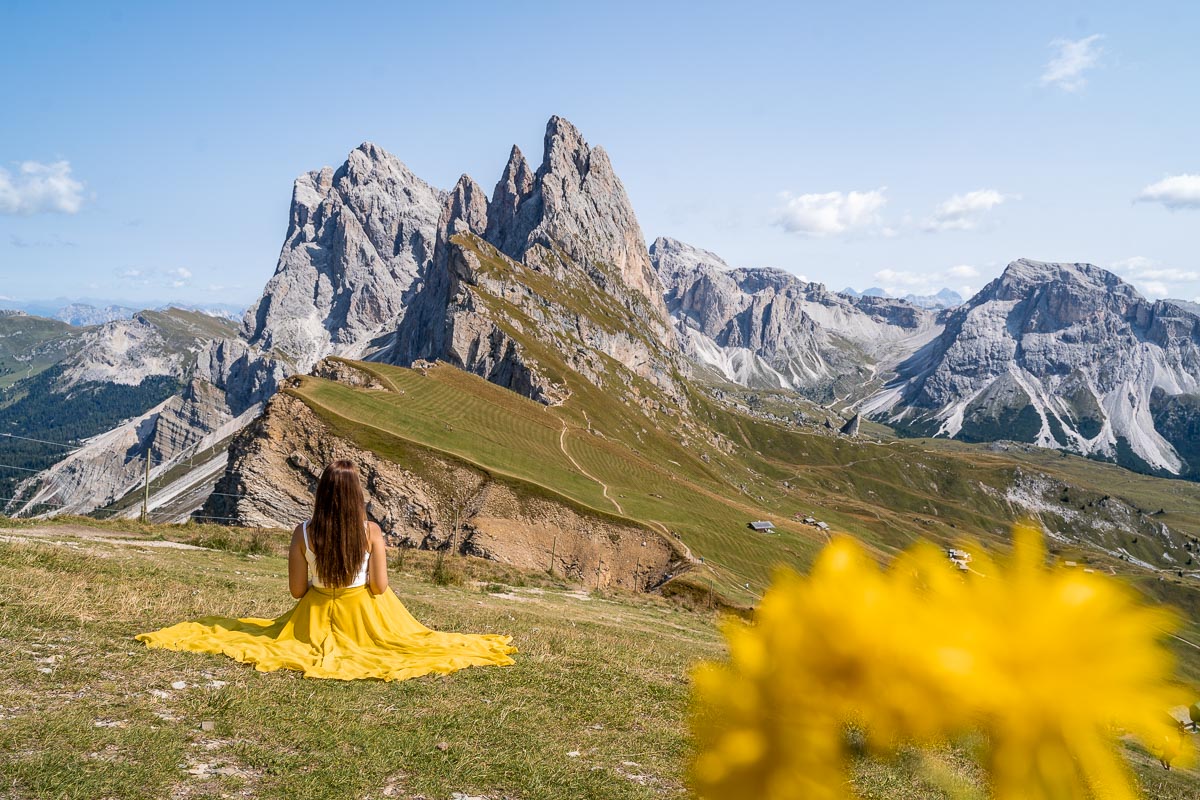
Situated in the Puez Odle Nature Park, Seceda is one of the most unusual mountain formations in the Dolomites. Its ridgeline juts out above the nearby villages and from its summit, you can see the Odle/Geisler Peaks.
Depending on how much time and stamina you have, you can take either this easy hiking option or the moderate option below. Either way, hiking to Seceda is one of the best hikes in the Dolomites for scenery.
From the cable car station, you can follow the signs up the hill towards the viewpoint. It’s not too steep and is manageable for most fitness levels. Once at the ridge, you can walk along the ridgeline and capture your photos.
There is a metal ring which has all the names of the mountains labeled so you can tell exactly what you’re looking at! Once you’re ready, just head back to the cable car.
8. Seceda Ridge: Option B
Starting point: Col Raiser Cable Car
Ending point: Col Raiser Cable Car
Distance: 12 km (7.5 miles)
Elevation gain: 500 meters (1,640 feet)
Duration: 4 hours
Difficulty: Moderate
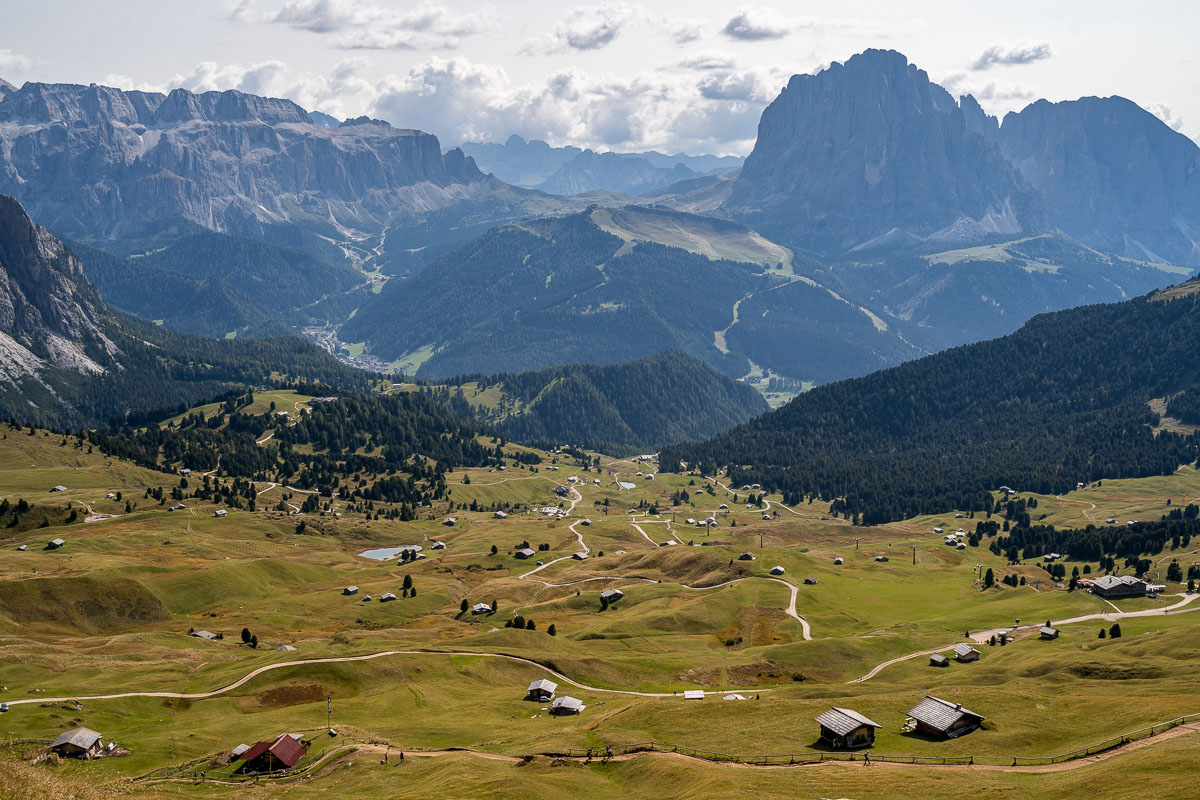
If you want to turn your trip to Seceda into a longer hike, then this is one of the best day hikes in the Dolomites if you don’t mind a few steep bursts.
After hopping off at the Col Raiser cable car station, you will follow the trail that leads you to Rifugio Fermeda Hutte. This first section is lovely and flat and you’ll want to stop lots to take photographs of all the peaks that unravel in front of you.
From the rifugio, the track (no. 2) becomes steeper as you start to gain elevation.
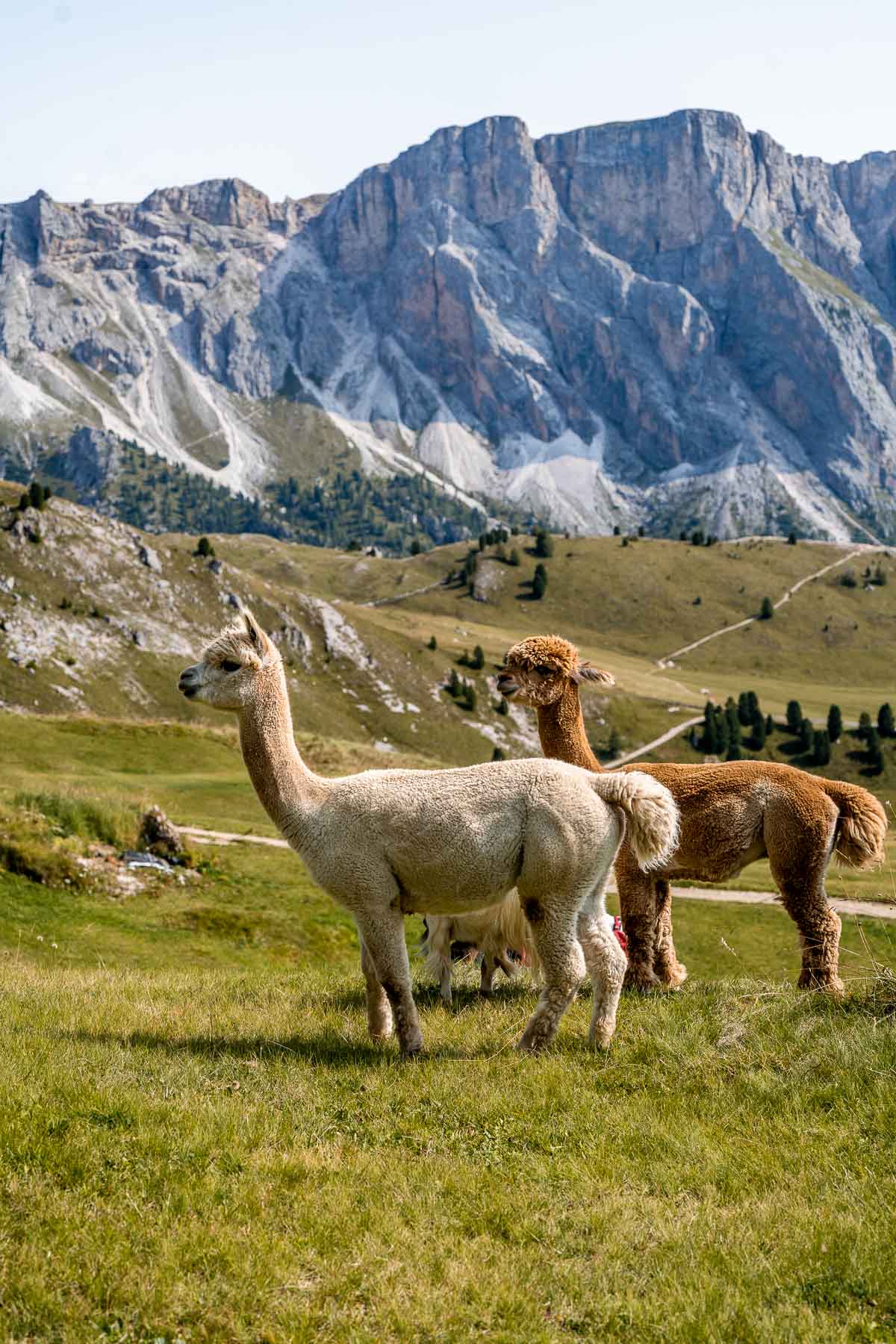
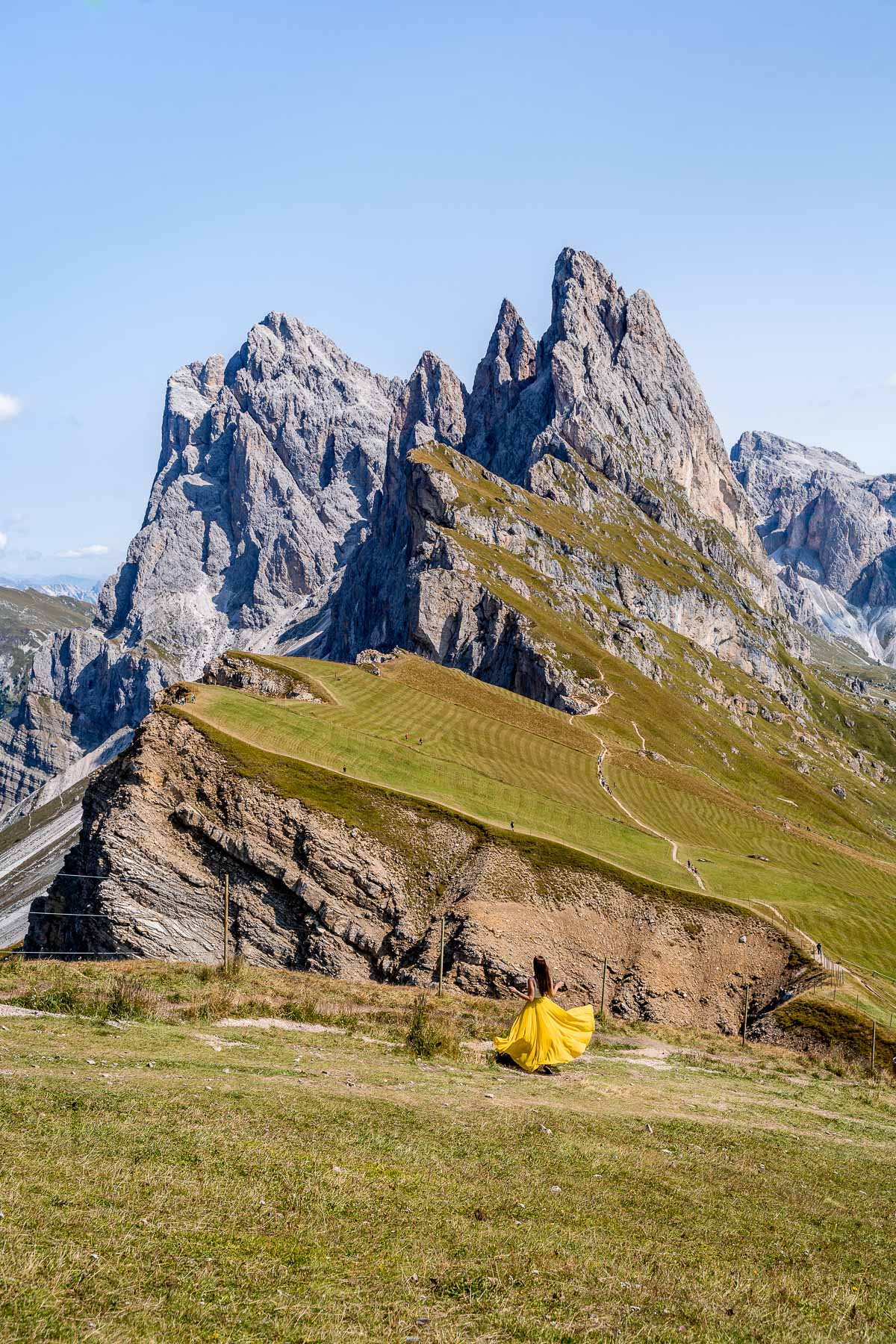
There are a couple of restaurants where you can stop for food, including Baita Daniel Hütte and Mastle Hütte. Shortly after the second restaurant, you have a steep hike up towards the Seceda cable car from where you will join the flow of hikers who opted for the shorter route detailed above.
As you start to descend you will follow trail nos. 6, 1, and 2B all the way to Malga Pieralongia from where signs will guide you back down to Col Raiser. The entire loop provides panoramic views across the peaks.
9. Adolf Munkel Weg (Odle-Geisler)
Starting point: Zanser Arm, Zans/Zannes
Ending point: Zanser Arm
Distance: 9 km (5.6 miles)
Elevation gain: 443 meters (1,453 feet)
Duration: 3-4 hours
Difficulty: Easy/Moderate
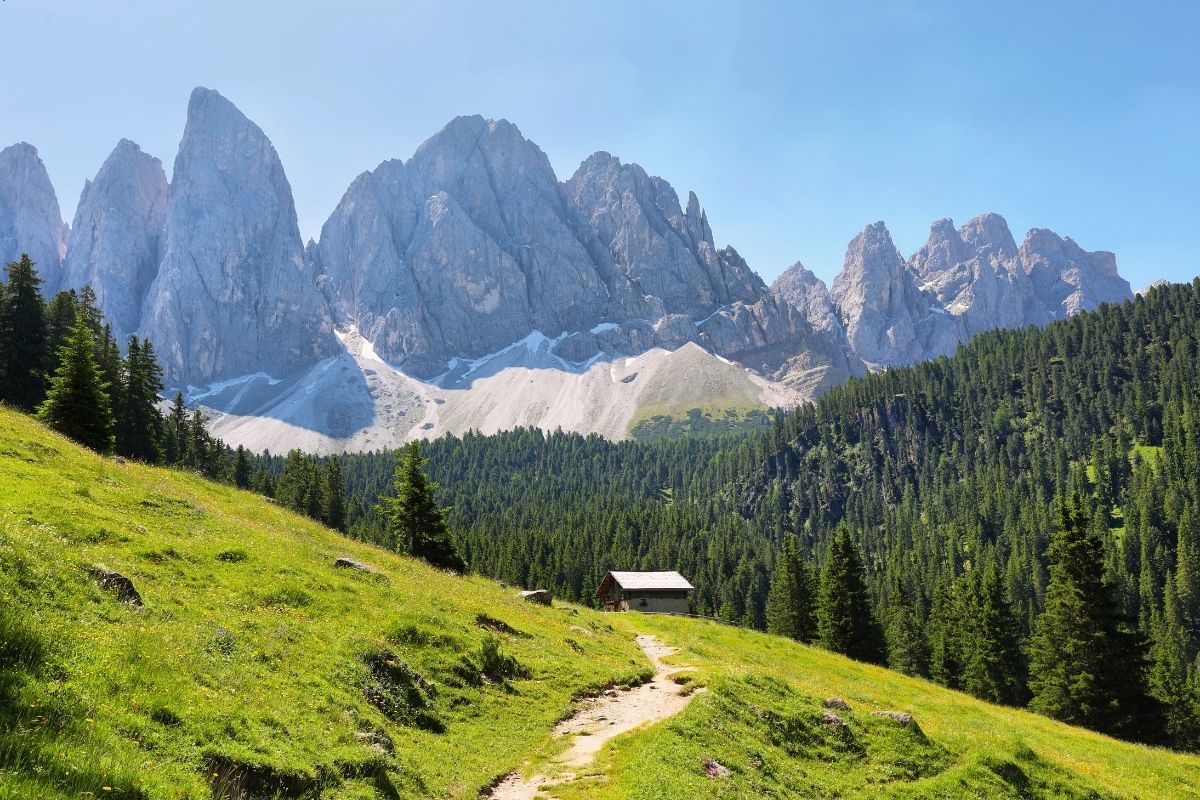
The Adolf Munkel Weg is a scenic hike that takes you through the glorious alpine meadows that cushion the base of the Odle/Geisler peaks. It’s one of the best day hikes in the Dolomites that gives you a slice of all the dynamic scenery the region has on offer.
You can hike either clockwise or counterclockwise. My tip is to go with the counterclockwise option so that you have the peaks ahead of you the whole time.
From the Zanser Arm parking area, you will look for trail no. 36 which takes you into a wooded forest towards Dusler Alm. The track is signposted through the woodland but you need to keep an eye out for a junction at which you need to veer left and eventually up a flight of steps.
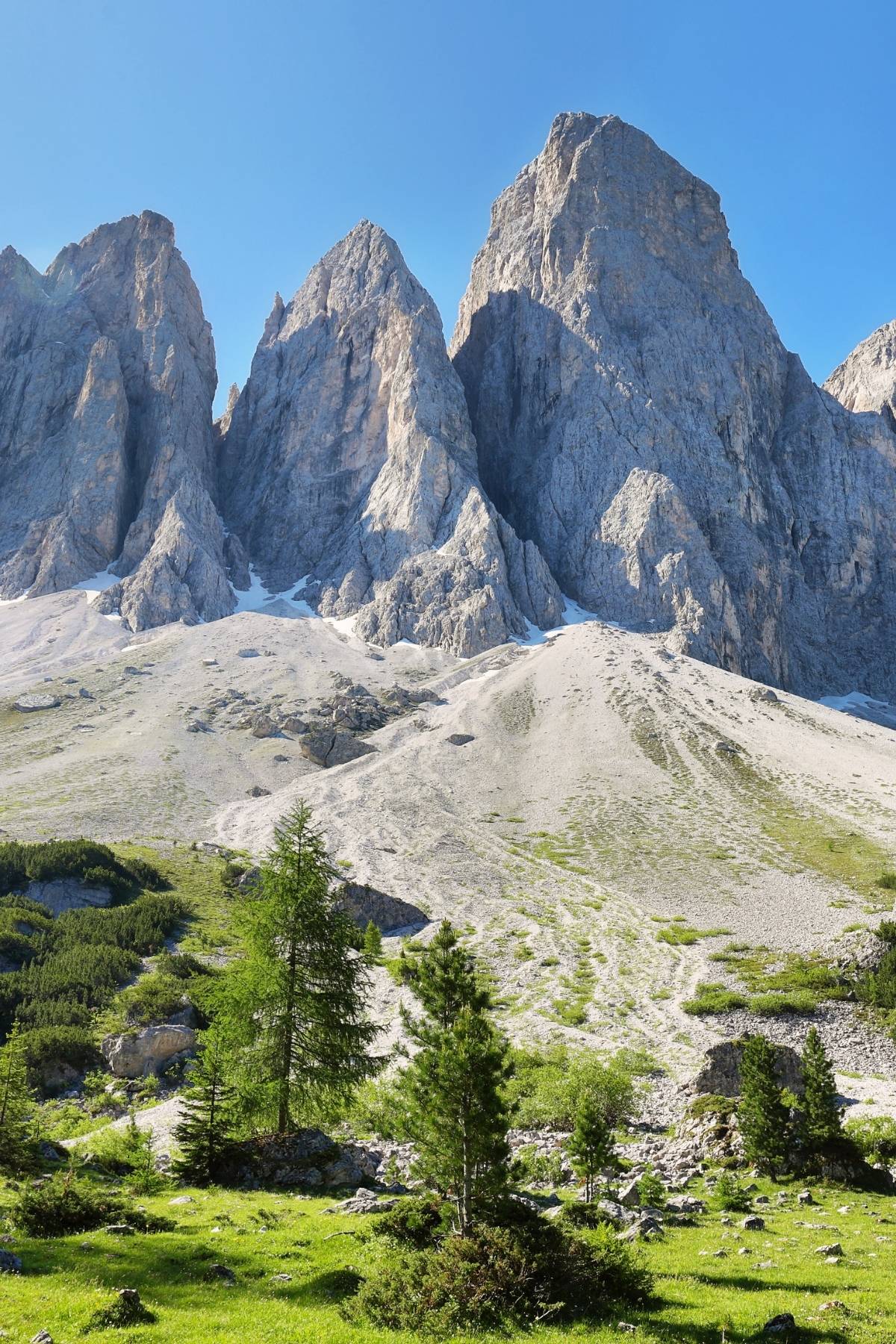
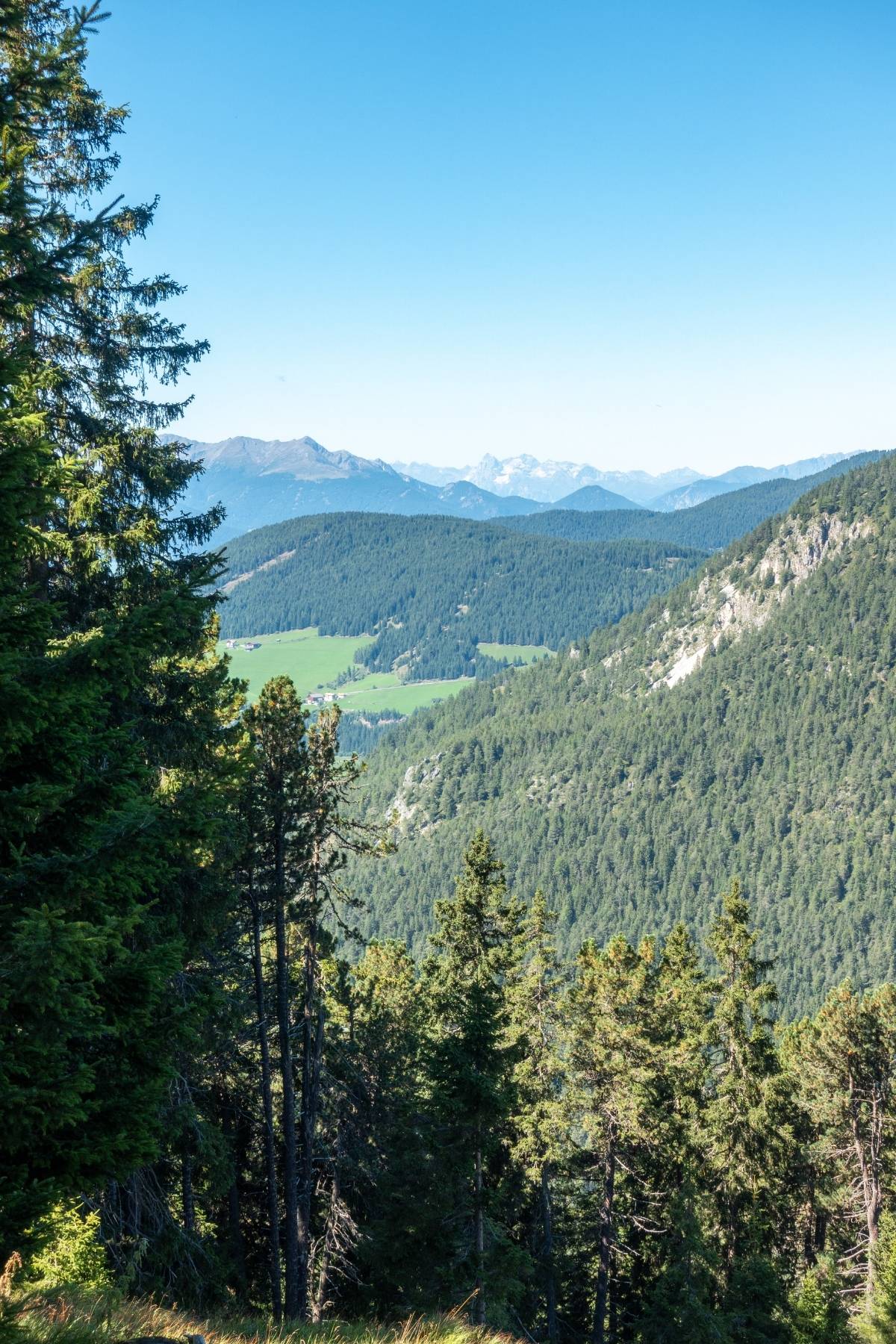
Once you emerge from the forest you will be in the lush green fields of Val di Funes. Follow the signs to Geisler Alm, which is one of the most breathtaking places to take photographs of the Odle/Geisler ranges.
From here you will continue by following the signs to Adolf Munkel Weg. You’ll reach Gschnagenhardt Alm which is the perfect spot for lunch!
The next section of the hike is incredible as you will weave through a fragrant pine forest which every now and then provides wonderful shots of the Odle/Geisler mountains.
Keep following the undulating track (no. 35) which will lead you across a picturesque stream before eventually bringing you to trail no. 6 which will take you back to your original starting point.
10. Panoramaweg at Santa Maddalena
Starting point: Santa Maddalena
Ending point: Santa Maddalena
Distance: 7 km (4.4 miles)
Elevation gain: 250 meters (820 feet)
Duration: 2.5 hours
Difficulty: Easy
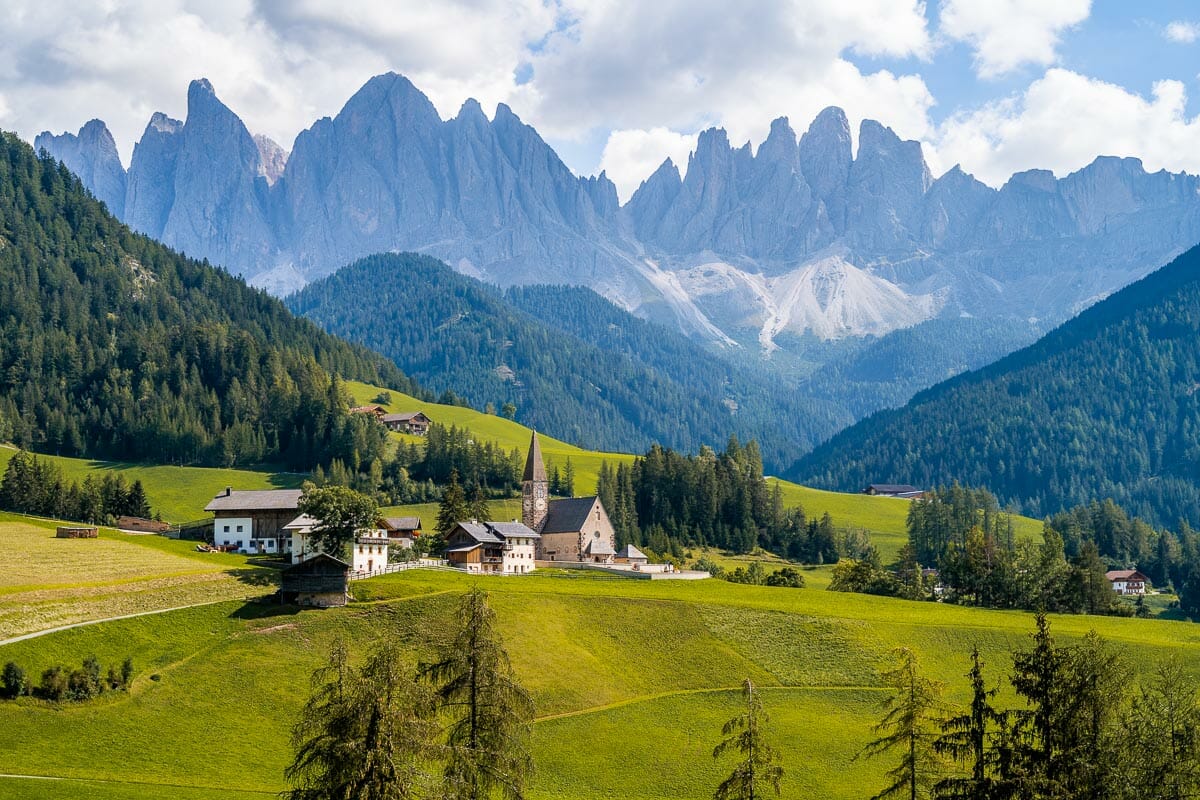
Santa Maddalena is one of the most beautiful churches in the region of Val di Funes. You can park your car in Santa Maddalena and then walk to the church to start one of the best hikes in the Dolomites for all hiking abilities.
From the church, you can hike 20 minutes up the hill on the northwest side. There you will find the famous lookout of the church with a backdrop of rolling hills and jagged mountain peaks. If you wish, you can return back to town once you’ve seen the view. Otherwise, follow the path for the Panoramaweg hike.
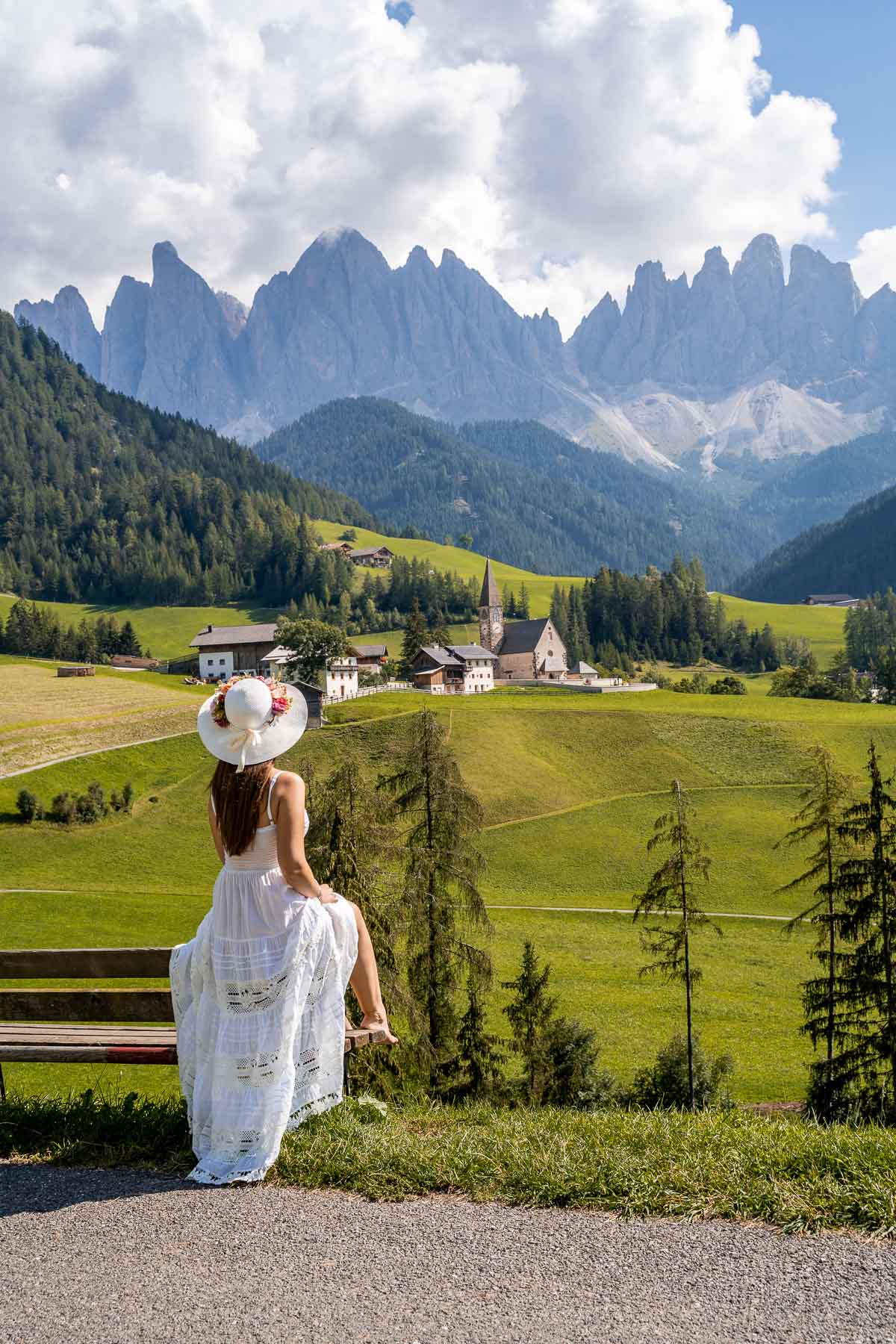
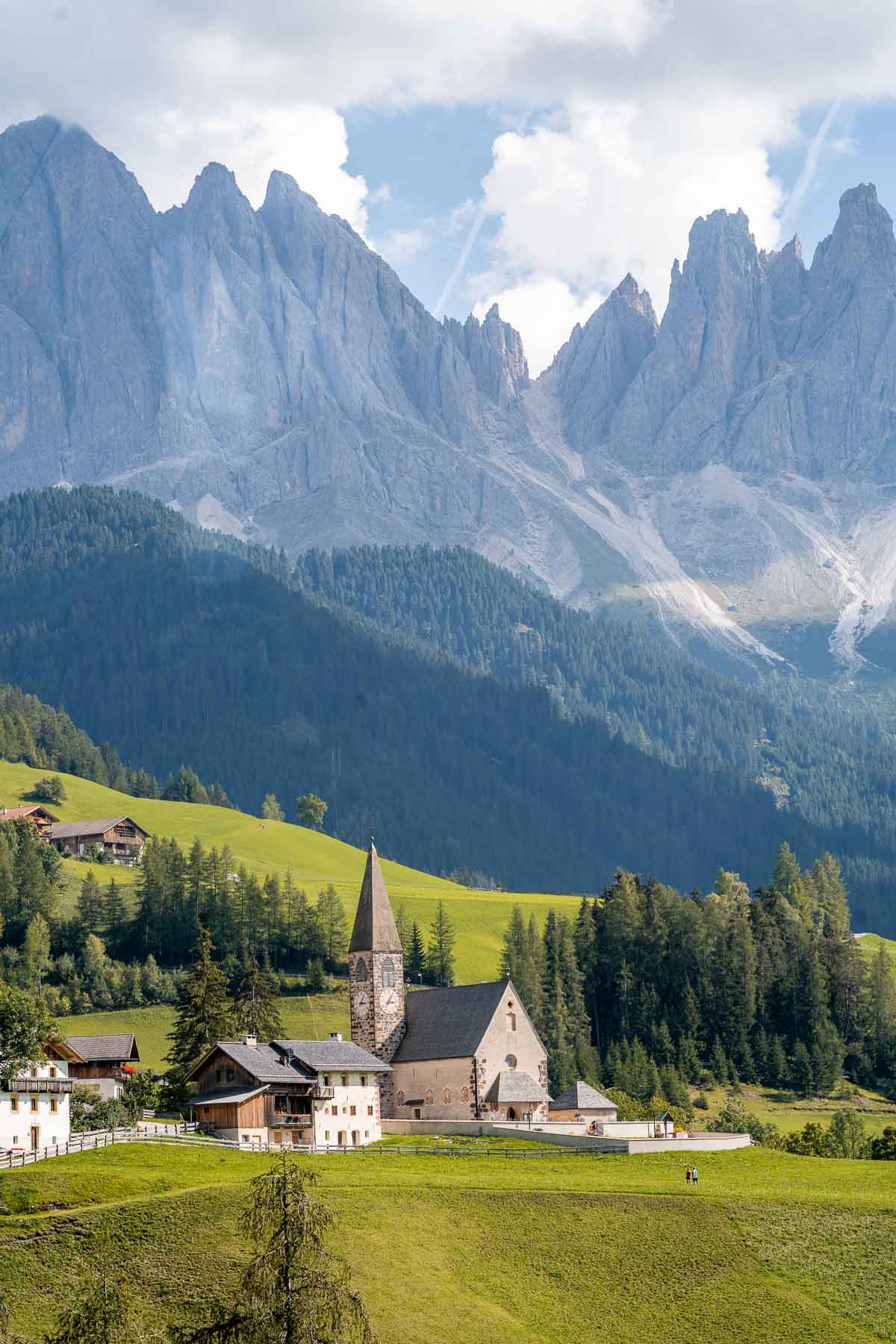
Along with the Sunnseitenweg trail, the Panoramaweg track skirts around the edge of the Val di Funes and swings by the nearby town of San Pietro. You will then loop back to your original starting point.
Santa Maddalena is a short drive from Zanser Alm so you could combine this short hike with Adolf Munkel Weg. While you’re at it, it’s worth checking out the nearby Church of St. John, which is known as one of the most photographed churches in the entire Dolomites.
11. Puez-Odle Altopiano
Starting point: Dantercepies Chairlift, Selva di Val Gardena
Ending point: Dantercepies Chairlift, Selva di Val Gardena
Distance: 14.5 km (9 miles)
Elevation gain: 500 meters (1,150 meters descent)
Duration: 8 hours
Difficulty: Challenging
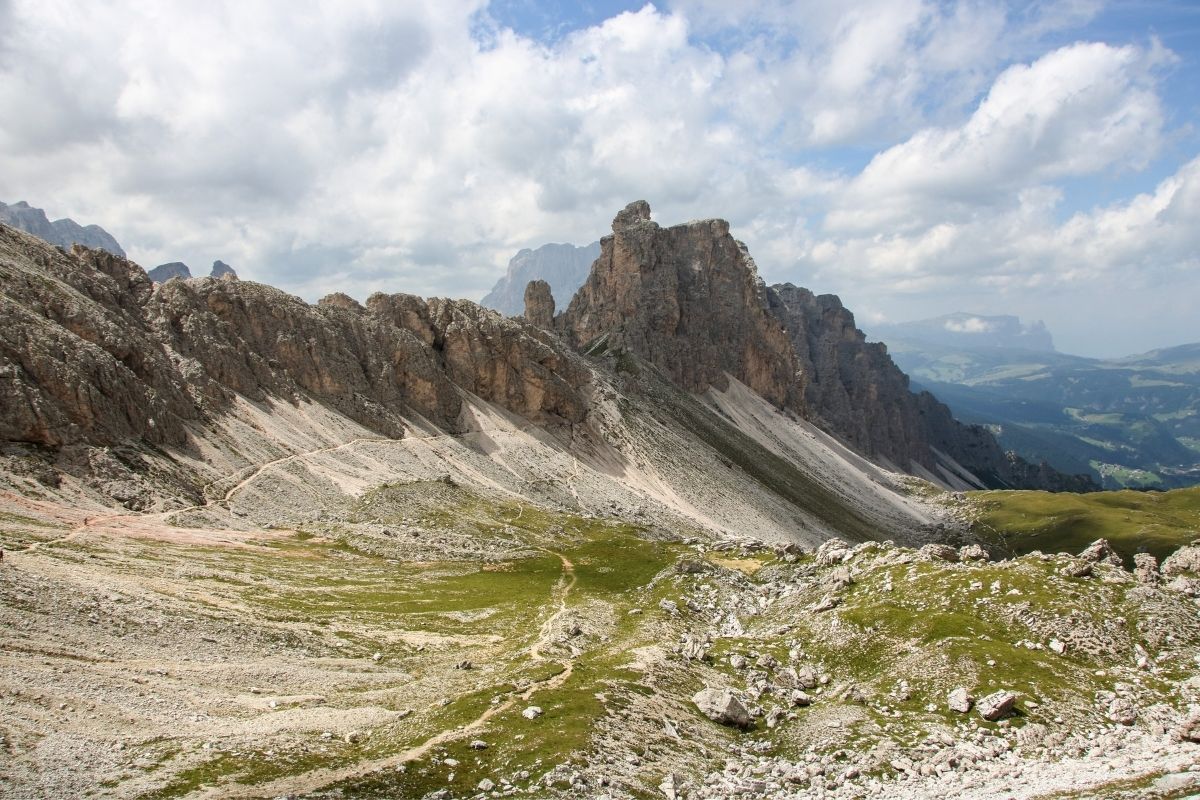
The Puez-Odle Altopiano is one of the best hikes in the Dolomites if you’re ready for an invigorating ramble through the rocky mountains.
Your hike starts with a scenic ascent high into the mountains via the Dantercepies cable car. Of course, you could always walk up but I think your legs will appreciate this later! From the cable car station, you will walk eastwards towards Rifugio Jimmy where the trail officially begins.
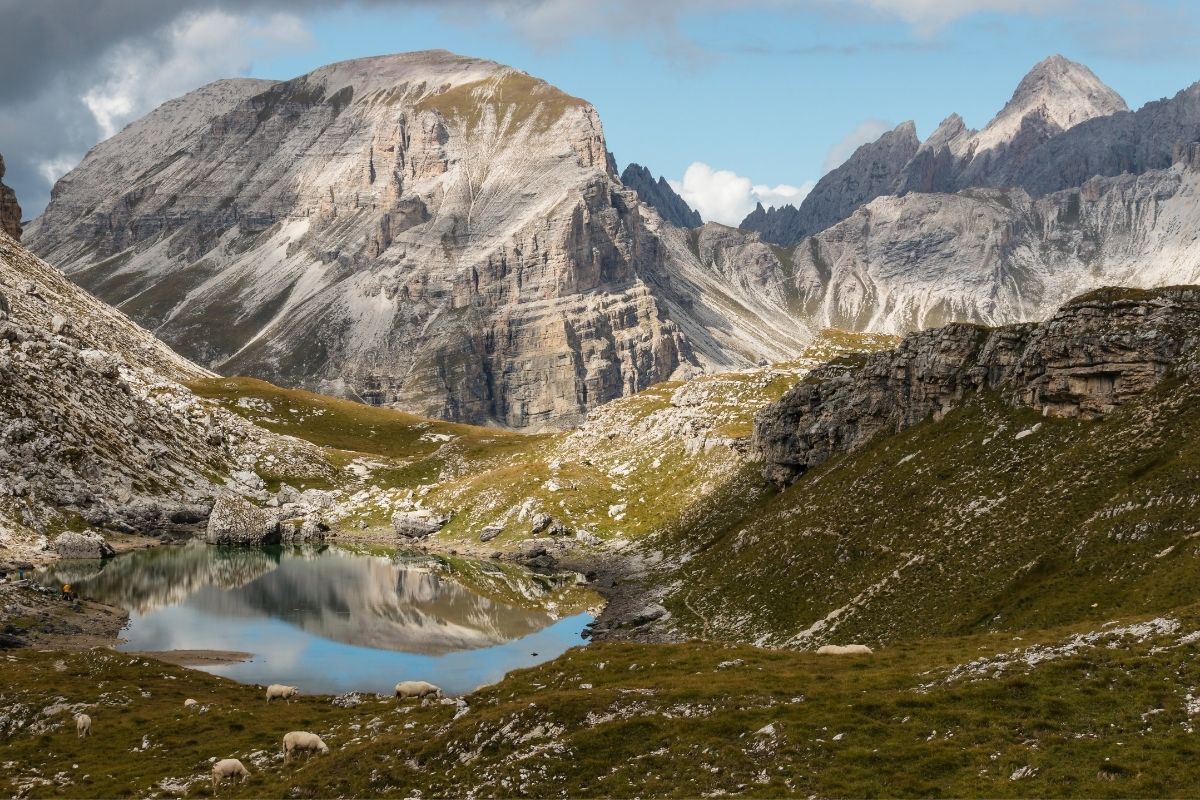
No. 2 trail takes you high into the mountains where you will be surrounded by rocky formations that soar above the verdant green valleys below. You will also catch sight of Lago di Crespeina /Lech de Crespëina.
This part of the hike is a little challenging as you will be up and down and the gravel track makes it slippy in parts. But it’s totally worth it once you get to the viewpoint which gives you 360° views across the Vallunga valley.
From here you will walk towards Rifugio Puez where you can buy food and drinks. The rest of the hike is your gradual descent back into Selva, which is 1,150 meters in total.
Steep in places, this can be tough on the knees so take your time and consider hiking poles if you’re wobbly with downhill clambers.
12. Lago di Sorapis
Starting point: Passo Tre Croci
Ending point: Passo Tre Croci
Distance: 12.5 km (7.7 miles)
Elevation gain: 434 meters (1,424 feet)
Duration: 4-5 hours
Difficulty: Moderate
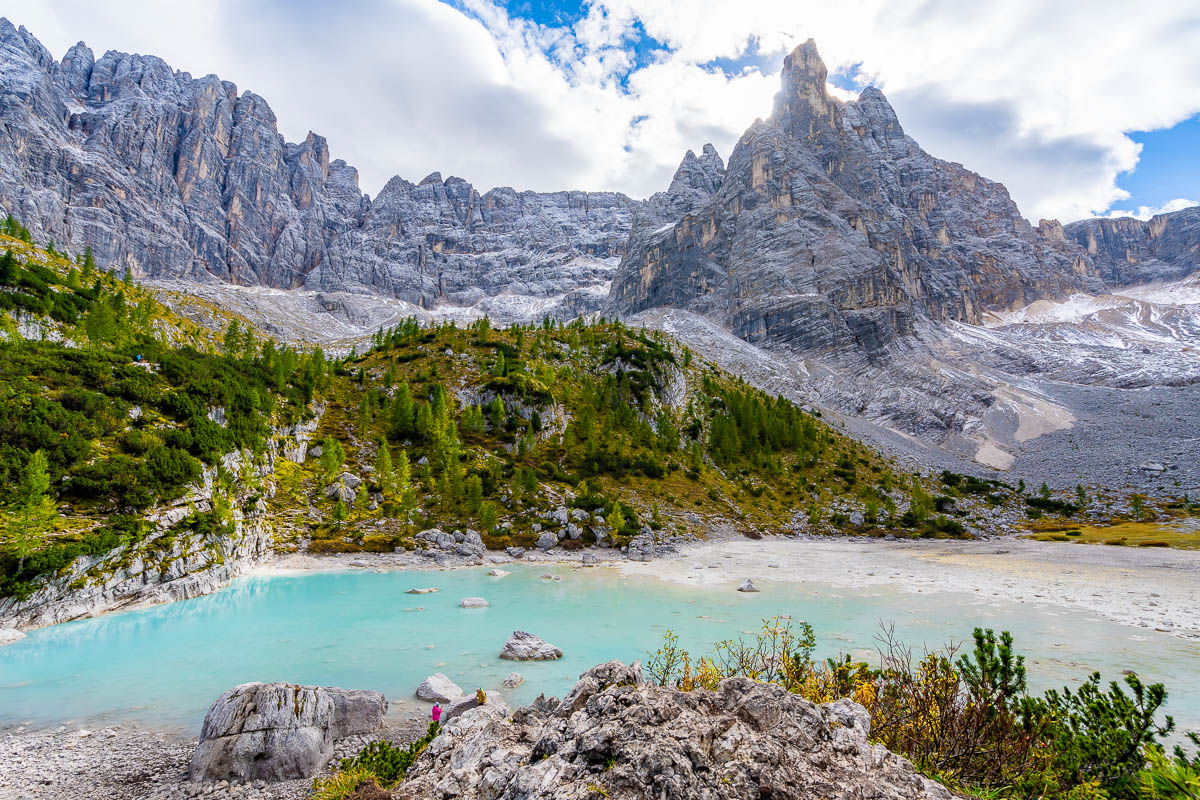
Lago di Sorapis is one of the most beautiful lakes in the Dolomites but if you want to see its turquoise waters with your own eyes, you’re going to need to strap on your hiking boots!
The hike takes around 2 hours each way. It’s well-marked and not too demanding but you’ll need to traverse some narrow footpaths that hug the cliff face in some parts.
There is a railing to hang onto but if you suffer vertigo this might not be the right hike for you. It’s certainly one of the best lakes to visit in the Dolomites if you fancy getting adventurous!
Once you reach the lake itself you can stroll around its circumference in around 30 minutes. The color of this lake is particularly vivid and is caused by glacial dust. On a clear day, the hues really pop and it’s a joy to photograph.
You can picnic by the lake, or dine at Rifugio Vandelli, before heading back along the same route.
13. Vajolet Towers/Torri del Vajolet
Starting point: Malga Frommer Alm
Ending point: Malga Frommer Alm
Distance: 8 km (5 miles)
Elevation gain: 650 meters (2,100 feet)
Duration: 6 hours
Difficulty: Challenging
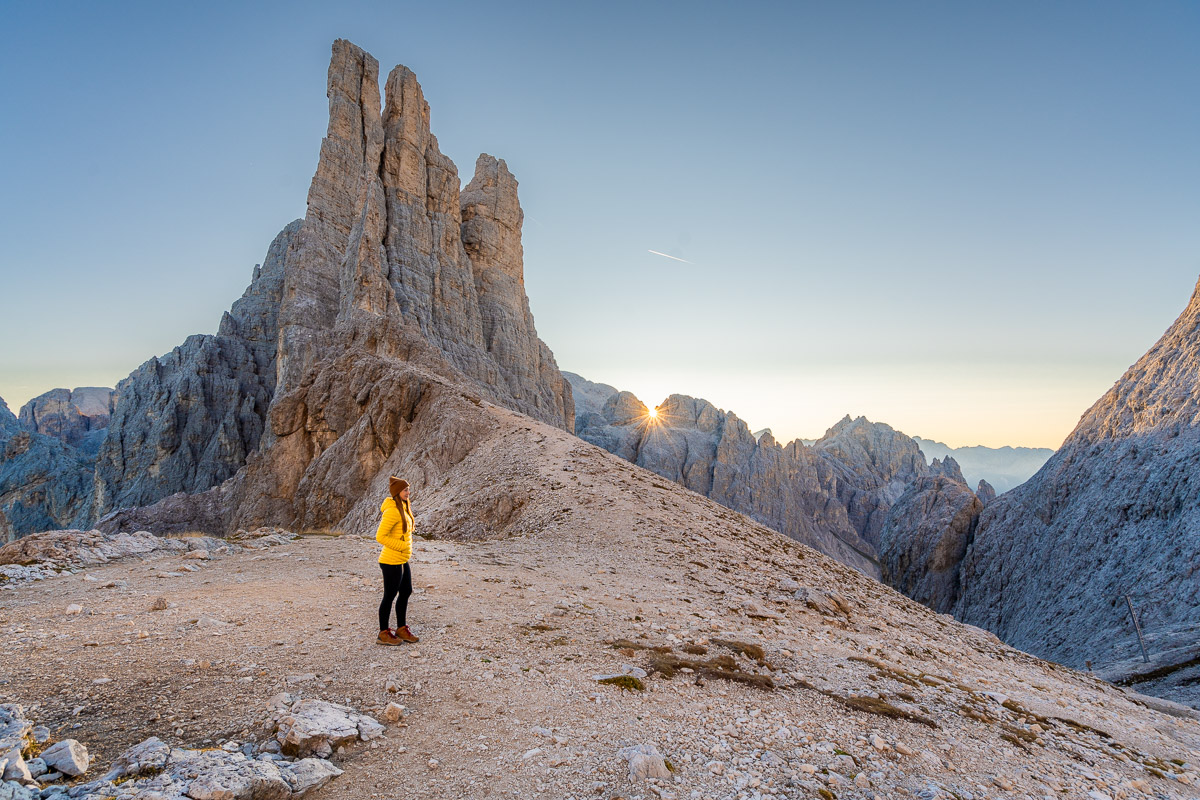
The Vajolet Towers are a cluster of six spires that rise from the Rosengarten/Catinaccio mountain range forming the boundary between South Tyrol and Trentino.
There are several ways to reach the towers and if you are an experienced climber then this is one of the best hikes in the Dolomites for you to hone your skills. However, I’m going to talk about a hike that doesn’t require any technical climbing.
After parking your car in Malga Frommer Alm, you can ride the König Laurin chairlift to Rifugio Fronza/Rosengarten Hütte. Alternatively, you can hike this section but it will add 2 hours to your hike.
From the rifugio, you will see the signs for trail no. 550. The trail starts off very steep and you will need to scramble over the rocks in places. There are cables and ropes in place to help you but you’ll need reliable footwear.
Once you reach a junction, you can choose to go left or right. As the left option (Via Ferrata Passo Santner) is very challenging I would only recommend this if you are an experienced climber and have some gear. Instead, take the path to the right which leads to Pas de le Coronelle.
This track gradually gets steeper and eventually culminates at some wooden steps. Once you’ve reached the top, you will have an incredible view across the rocky crags at 2,630 meters above sea level!
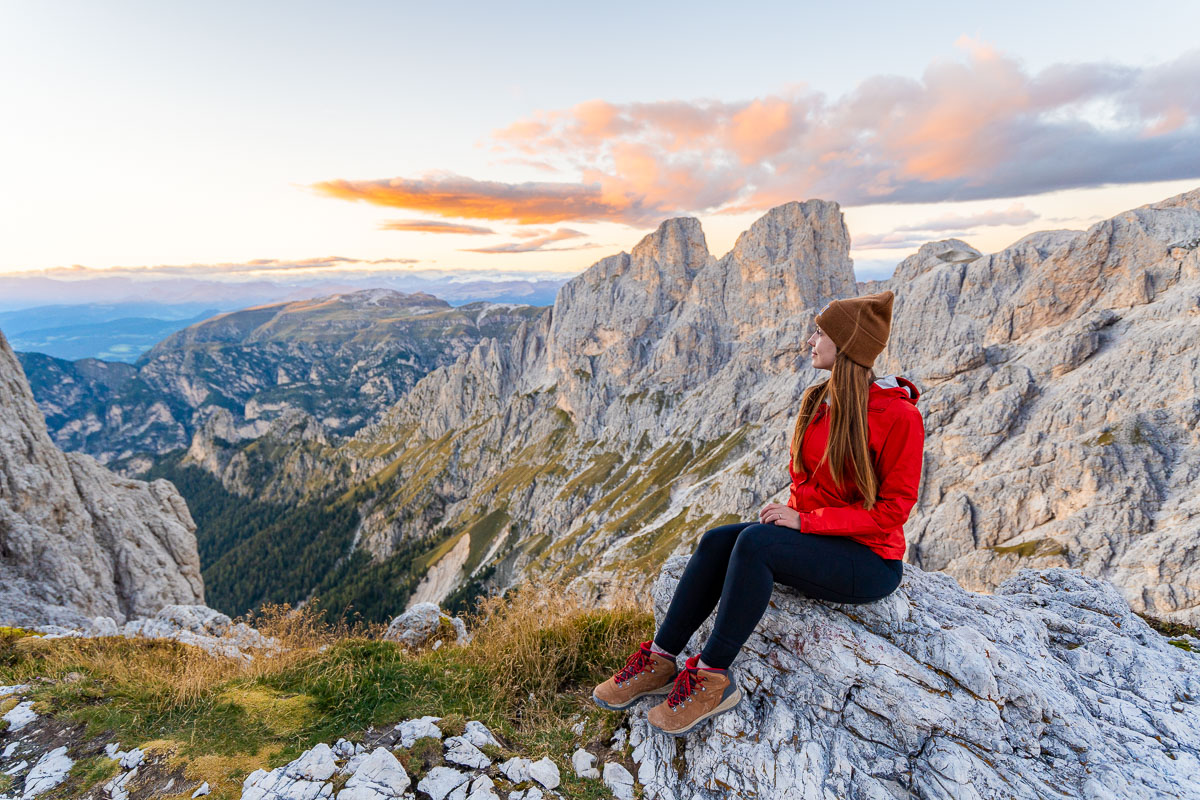
Then you have a steep descent down trail no. 541 – if you have poles this is their moment to shine. I recommend that you take a break at Rifugio Vajolet and have some food or coffee with the Vajolet Towers in your background.
Your final ascent to reach the base of the towers requires a scramble up around 400 meters of steep, rocky path. At the summit, you will be greeted warmly by the Rifugio Alberto and an amazing view of the towers.
Once you’re ready, you can head back to the starting point via the same track. This one is for you if you’re ready for some pretty grueling but utterly rewarding hiking in the Dolomites.
Planning a trip to the Dolomites?
Then you might want to take a look at all our other travel guides about the Dolomites. I promise, they are just as awesome as this article was!
- Where to Stay in the Dolomites: Best Areas & Hotels
- The Perfect Dolomites Road Trip Itinerary for 5 Days
- 11 Most Beautiful Lakes in the Dolomites You Can’t Miss
- 13 Best Hikes in the Dolomites You Don’t Want to Miss
- Tre Cime di Lavaredo Hike: All You Need to Know Before Visiting
- Cadini di Misurina Hike: How to Find the Famous Viewpoint in the Dolomites
- Hotel Review: Chalet Al Foss Alp Resort, Italy
- Hotel Review: La Maiena Meran Resort, Italy
Other Great Destinations in Italy: Cinque Terre | Florence | Lake Como | Lake Garda | Rome | Venice
Pin It for Later!

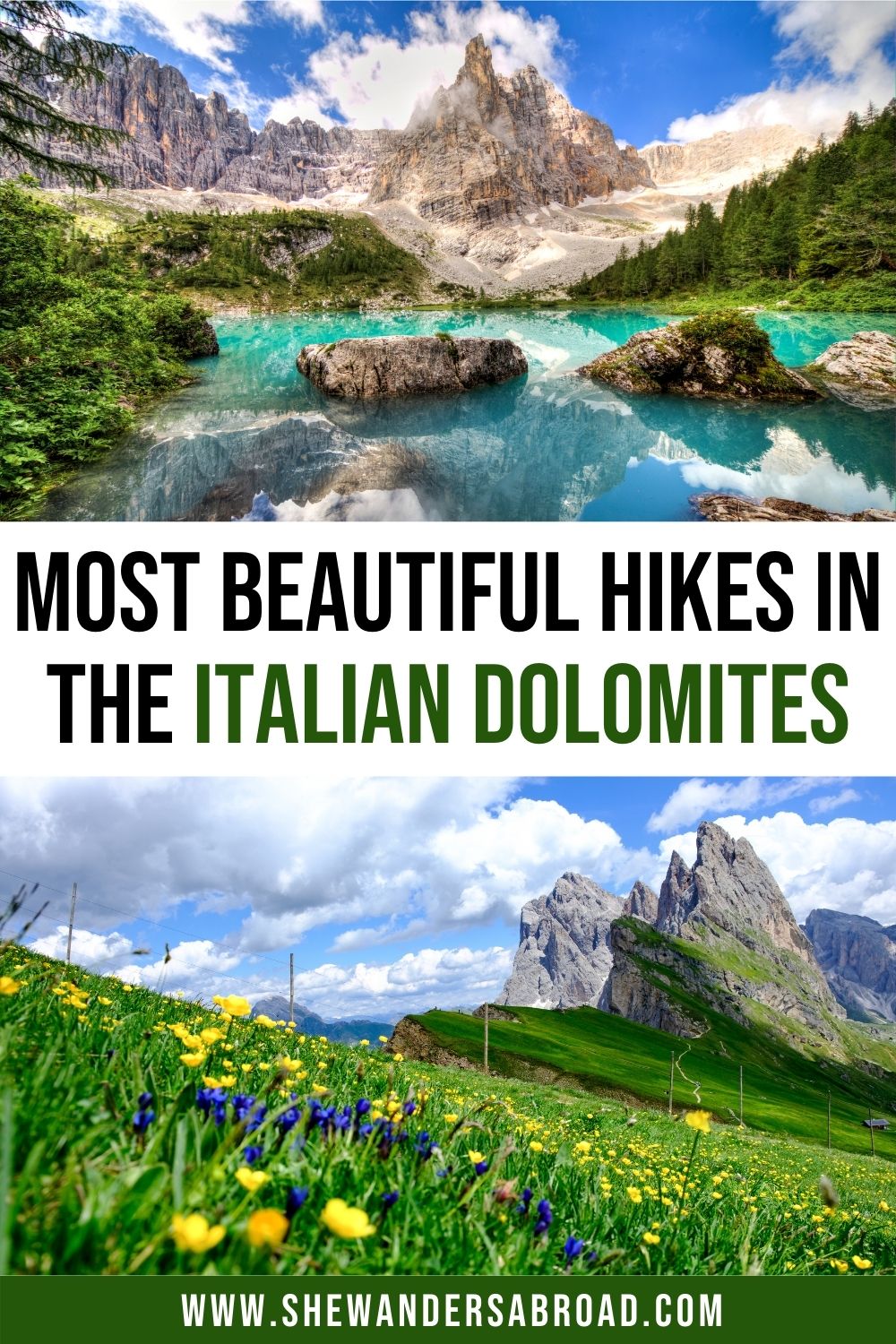

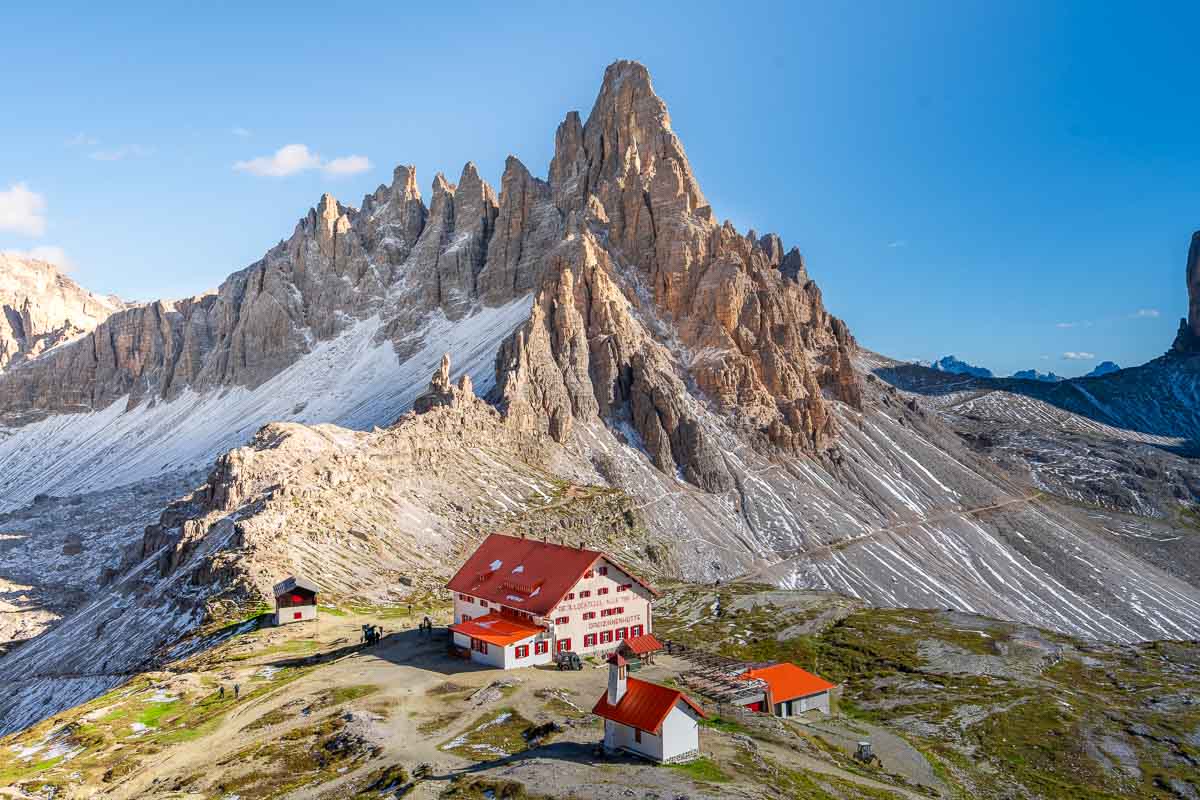




Thank you Kriszti for the wonderful information in this post : )
My pleasure 🙂